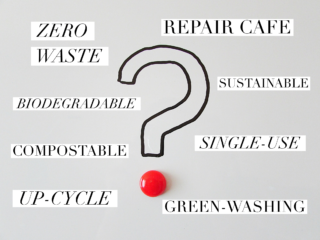
I realized Green That Life needed a comprehensive Definitions, Terms and Phrases page when I used the word, “disposables,” in a conversation with a friend and she immediately asked, “What’s a disposable?”
I’ve been using words like “disposable,” “single-use,” and “greenwashing” for so long that I’ve forgotten how odd they sound. But there are also words and terms that are new to me.
Instead of having to hunt for accurate definitions, I’ve created Green That Life’s list of Green Definitions, Terms and Phrases. You’ll find clear and concise definitions of words typically found in topics related to sustainability, climate change and the environment.
Table of Contents
- Adaptation
- Alternative Energy
- Air Quality Index (AQI)
- Anthropogenic
- Baseload Power Plant
- B Corporation Certification
- “Behind the Meter”
- Beneficial Electrification
- Beneficial Insects
- Biodegradable
- Biodiesel
- Biodiversity
- Biofuel
- Biomass
- Biomimicry
- Bioplastics (or Bio-based Plastics)
- Bioswale
- Brown Power
- Cage-Free
- Cap and Trade
- Capsule Wardrobe
- Carbon Capture and Storage (CCS)
- Carbon Cycle
- Carbon Dioxide (CO2)
- Carbon Dioxide Equivalent (CO2e)
- Carbon Footprint
- Carbon Neutral
- Carbon Offset
- Carbon Sink
- Carbon Sequestration
- Carbon Source
- Carbon Tax
- Chemical Recycling
- Chlorofluorocarbons (CFCs)
- Circular Economy
- Clean Air Act
- Clean Water Act
- Climatarian
- Climatarian Diet
- Climate
- Climate Change
- Climate Communication
- Climate Hero Ingredients
- Climate Liability Litigation
- Climate System
- Closing the Loop
- Colony Collapse Disorder (CCD)
- Community Choice Aggregation (CCA)
- Community Solar
- Community Supported Agriculture (CSA)
- Compost
- Compostable
- Confirmation Bias
- Conservation
- Cradle-to-Cradle
- Cradle-to-Grave
- Deadstock Fabric
- Decarbonization
- Decompose
- Deforestation
- Disposables
- Distributed Energy Resource (DER)
- Downcycle
- Dual-Stream Recycling
- Durable
- Ecocide
- Ecosystem
- Energy Star
- Environmental Justice
- Effluent
- Eutrophication
- Extended Producer Responsibility (EPR)
- Fairtrade Certification
- Fast Fashion
- Food Miles
- Food Scrap (or Waste) Recycling
- Forever Chemicals
- Fossil Fuels
- Freegan
- Free-Range
- “Front of the Meter”
- Geoengineering
- Geothermal Energy
- Global Warming
- Grasscycling
- Grass-Fed
- Gray Infrastructure
- Greenhouse Effect
- Greenhouse Gases (GHG) and GHG Emissions
- Greenhouse Gas Protocol
- Green Hydrogen
- Green Infrastructure
- Green Roofs
- Greenwash
- Greywater
- Guerilla Gardening
- Heat Pump
- HVAC
- Hybrid Car
- Hypermiling
- Impervious (or Impermeable) Surface
- Integrated Pest Management (IPM)
- International Panel on Climate Change (IPCC)
- Invasive Plant Species
- Justice40 Initiative
- Just Transition
- Keeling Curve
- Keystone Species
- Landfill
- Leadership in Energy and Environmental Design (LEED)
- Lifecycle Assessment (LCA)
- Lifestyles of Health and Sustainability (LOHAS)
- Linear Economy
- Locavore
- Long Duration Energy Storage (LDES)
- Maladaptive Actions
- Managed Retreat
- Materials Recovery Facility (MRF)
- Methane (CH4)
- Microgrid
- Microplastics
- Mitigation
- Municipal Solid Waste (MSW)
- Naked Packaging
- National Sword Policy
- Nationally Determined Contributions (NDCs)
- Native Plant Species (“Natives”)
- Naturalized Plant
- Negawatt
- Net Metering
- Net Zero
- Non-Native Plant Species
- Non-Point Source Pollution
- Nurdles
- Organic and the Organic Seal
- Paris Agreement
- Particulate Matter
- Parts Per Million (ppm)
- Peaking Power Plant
- Permafrost
- Permeable Surfaces
- Petrochemicals
- PFAS (Per- and Polyfluoroalkyl) Chemicals
- Point Source Pollution
- Polyethylene vinyl acetate (PEVA)
- Post-consumer
- Preconsumer
- Preemption
- Rain Garden
- Redlining
- Regenerative Agriculture
- Regenivore
- Renewable Energy
- Repair Cafe
- Rewilding
- The Five (or Six) Rs
- Single-Stream Recycling
- Single-Use
- Slow Fashion
- Smoky Coal
- Soil Amendment
- Sustainability
- Sustainable Development
- Sustainable Development Goals (SDGs)
- Thermal Energy Network
- Thermoforming
- Tipping Point
- United Nations Global Biodiversity Framework
- Up-cycle
- Virgin Materials
- Virgin Plastic
- Virtual Power Plant (VPP)
- Volatile Organic Compounds (VOCs)
- Waste Incinerator
- Wetlands
- Wish-Cycling or Wishcycling
- Zero Waste
Adaptation
In a climate change context, adaptation refers to the actions or strategies that are taken to adapt to the impacts of climate change that are already happening or are expected to occur in the future. This can include building infrastructure to protect against sea level rise and extreme weather events, developing drought-resistant crops, and implementing early warning systems for natural disasters.
The goal of adaptation is to minimize the negative impacts of climate change on people, communities, and ecosystems, and to help them become more resilient to the effects of a changing climate.
Contrast with Mitigation.
Alternative Energy
Alternative energy is energy created from renewable or otherwise “green” sources. Some examples of alternative energy are hydroelectric, solar, and wind energy. Though not renewable, nuclear energy is considered by some as a form of alternative energy because little to no carbon emissions are created through this process. Alternative energy seeks to alleviate the environmental repercussions of conventional energy production.
Air Quality Index (AQI)
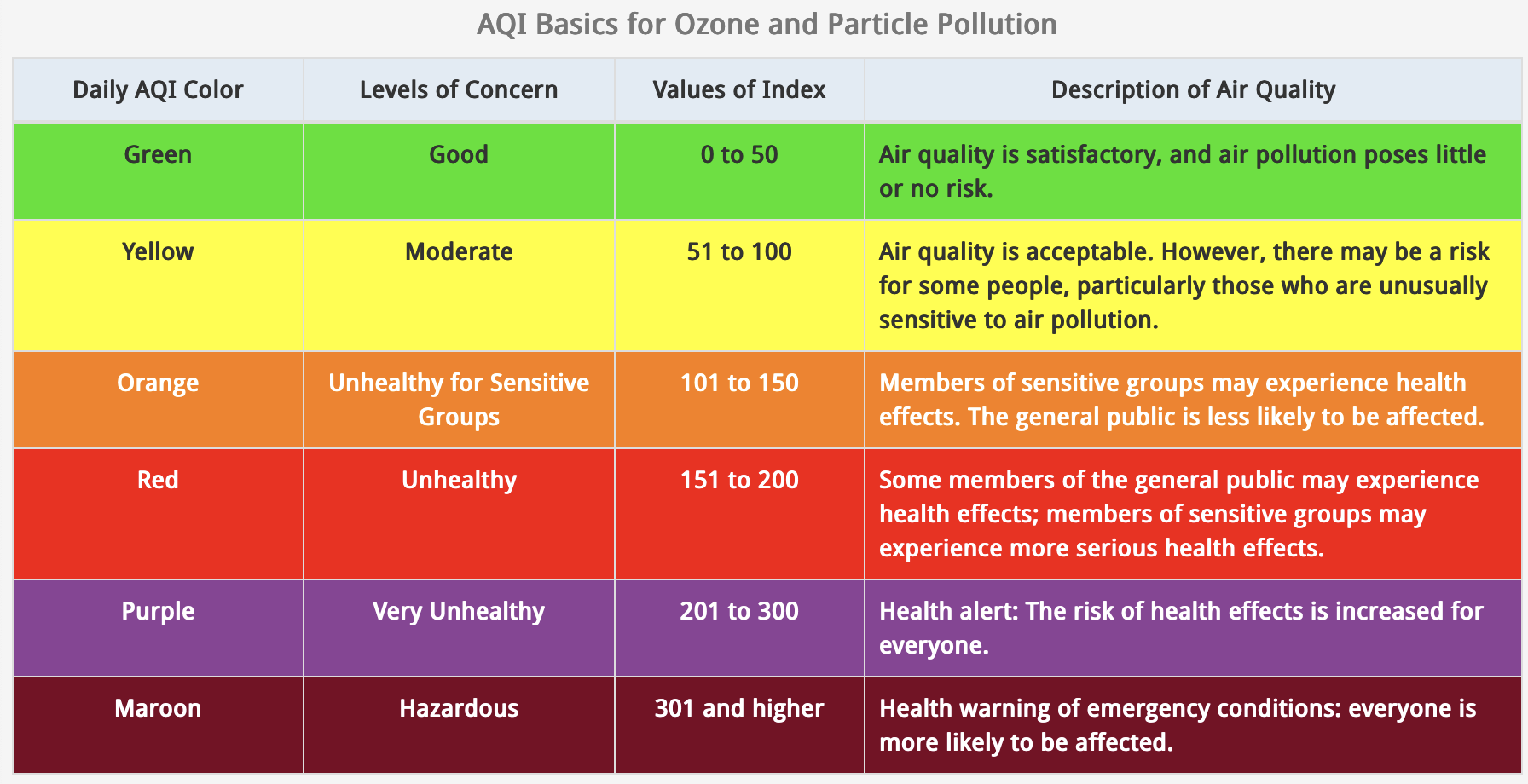
The Air Quality Index (AQI) is a measure of the quality of the air in a particular location. Higher AQI values indicate higher levels of air pollution. The AQI is calculated based on the concentrations of various pollutants in the air. There is no standardized formula for the AQI. It is typically reported by government agencies or other organizations that monitor air quality.
As indicated in the accompanying graphic, the U.S. AQI is divided into six categories and establishes an AQI for five major air pollutants regulated by the Clean Air Act:
- ground-level ozone
- particle pollution (also known as particulate matter, including PM2.5 and PM10)
- carbon monoxide
- sulfur dioxide
- nitrogen dioxide
The AQI is used to inform the public about air quality in a particular area and can also be used as a basis for decision-making about public health measures. To find the AQI in your area, visit Airnow.gov.
Anthropogenic
Anthropogenic refers to an environmental change that is caused or produced by human activities. In the context of climate change, anthropogenic refers to the changes in the Earth’s climate that are caused by human activity, such as the burning of fossil fuels, deforestation, and industrial processes.
Baseload Power Plant
A baseload power plant is a type of power plant that is designed to operate at a constant output level to meet the minimum demand for electricity, known as the baseload. These power plants typically use coal, nuclear, or hydroelectric power, and they are able to operate continuously for extended periods of time without needing to be shut down for maintenance.
Baseload power plants provide a steady and reliable supply of electricity, but they are not able to quickly adjust their output to meet changes in demand. As a result, they are often supplemented by other types of power plants, such as peaking power plants, which can respond more quickly to changes in demand.
B Corporation Certification
B Corporation Certification is a certification designation of private companies and businesses made by the non-profit, B Lab. B Lab “creates standards, policies, and tools for business, and [it certifies] companies—known as B Corps—who are leading the way.”
To be certified, companies must “meet the highest standards of verified social and environmental performance, public transparency, and legal accountability to balance profit and purpose.”
To receive certification, companies must submit a B Impact Assessment that evaluates how the company interacts with its workers, customers, community, and environment. B Lab verifies the company’s score to determine certification. Once certified, B Corps update their BIA every three years.
“Behind the Meter”
“Behind the meter” refers to a situation in which a device or system that generates electricity is located on the customer side of the electric meter. Because the electricity generated by these systems is consumed on-site, it does not flow through the meter and is therefore “behind” it.
These “behind the meter” systems or devices typically refer to small-scale, distributed generation systems such as rooftop solar panels or home batteries, which are installed by individual customers to generate their own electricity and reduce their reliance on the traditional electric grid. The term is also applied to smart appliances and thermostats that can modify customer usage.
Contrast with “front of the meter.”
Beneficial Electrification
Beneficial (or strategic) electrification is the use of electricity to replace fossil fuels in various residential and commercial sectors, such as transportation, heating, and industry.
This shift to electrification can yield a number of benefits, including reduced greenhouse gas emissions, improved air quality, and increased energy efficiency. In addition, the use of electricity allows for greater flexibility in the energy system, as it can be easily stored and distributed. As such, beneficial electrification is often seen as a key decarbonization strategy.
Beneficial Insects
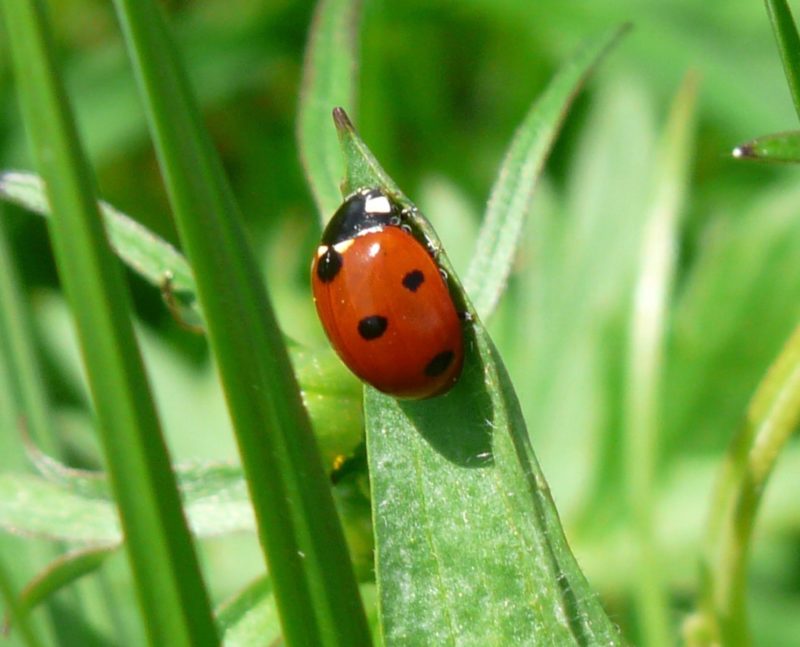
Biodegradable
A biodegradable item is one that “undergoes degradation resulting from the action of naturally occurring microorganisms such as bacteria, fungi, and algae.”
A few other points that distinguish biodegradable from compostable items:
- Timing. A biodegradable product doesn’t specify the length of time it takes to degrade. But when you think about it, everything biodegrades over time. It’s just how long it takes that’s key. So if that plastic cup is labeled “biodegradable” it could take 1,000 years for it to decompose and technically the label would be correct. But it certainly wouldn’t help with our increasing waste problem!
- Method of Breaking Down. A biodegradable product doesn’t specify the type of environment in which it will break down.
- Confusion. In short, the product label “biodegradable” carries with it a lack of clarity. And for this reason, many items labeled “biodegradable” may be intentionally misleading and designed to green-wash the consumer.
Biodiesel
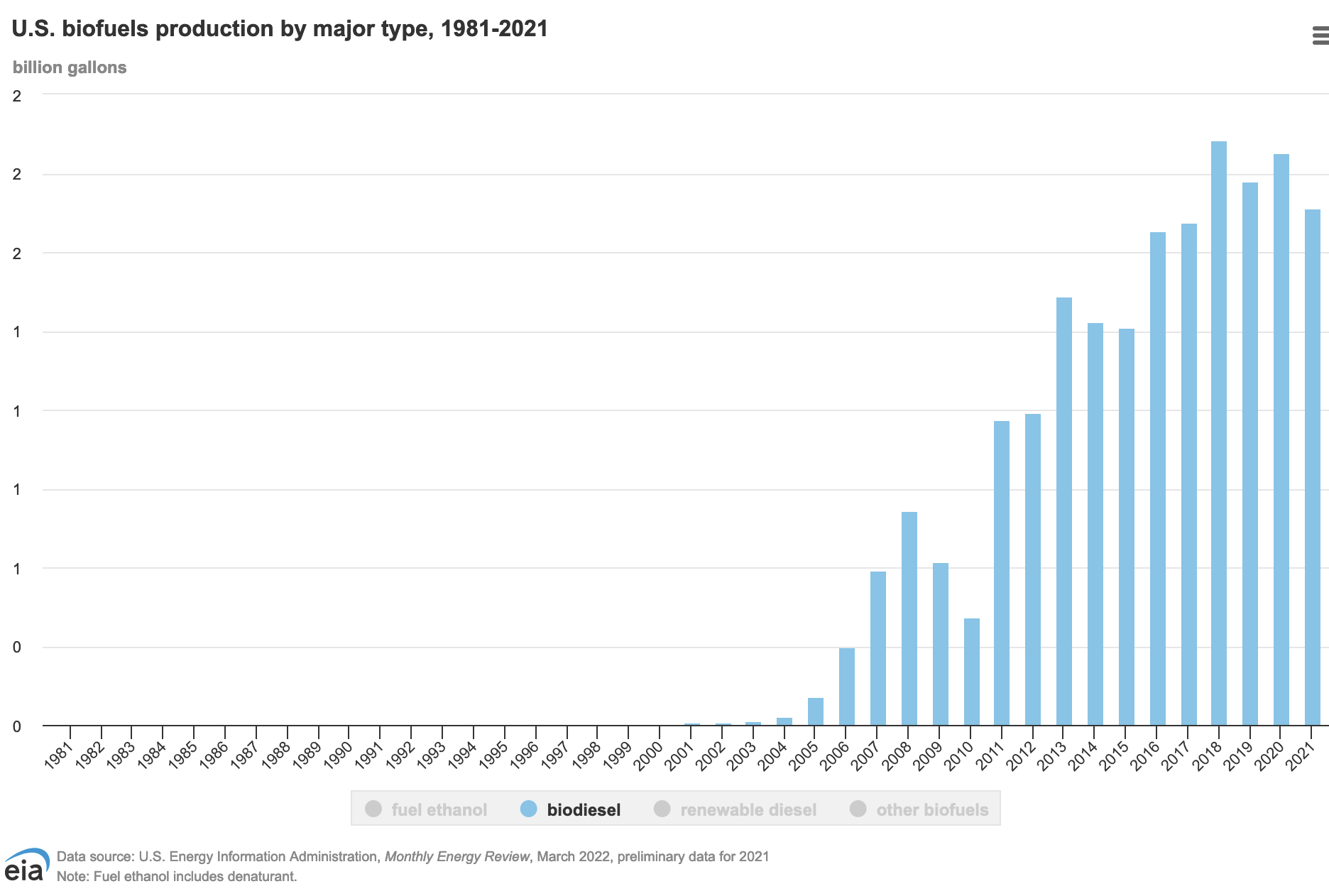
Biodiesel is a type of diesel fuel created from organic sources, such as plant and animal fat. Biodiesel is considered a biofuel and can be used in existing vehicles without the need for an engine conversion.
Biodiesel is often blended with conventional diesel for use in cars and trucks. This type of fuel is cheaper than conventional diesel in some countries. In the United States, however, the price has fluctuated over the last decade.
Biodiversity
Biodiversity (or biological diversity) refers to the variety and variability of life on Earth. This includes the diversity of species, the genetic diversity within each species, and the diversity of ecosystems and habitats.
The U.N. Convention on Biological Diversity defines biodiversity as “the variability among living organisms from all sources including, inter alia, terrestrial, marine and other aquatic ecosystems and the ecological complexes of which they are part; this includes diversity within species, between species and of ecosystems.”
Biodiversity is important because it helps to maintain the health and resilience of ecosystems, and it provides a wide range of benefits to humans, such as clean air and water, food, and medicine. Human activities, such as habitat destruction, pollution, and climate change are threatening biodiversity and putting the health of ecosystems at risk.
Biofuel
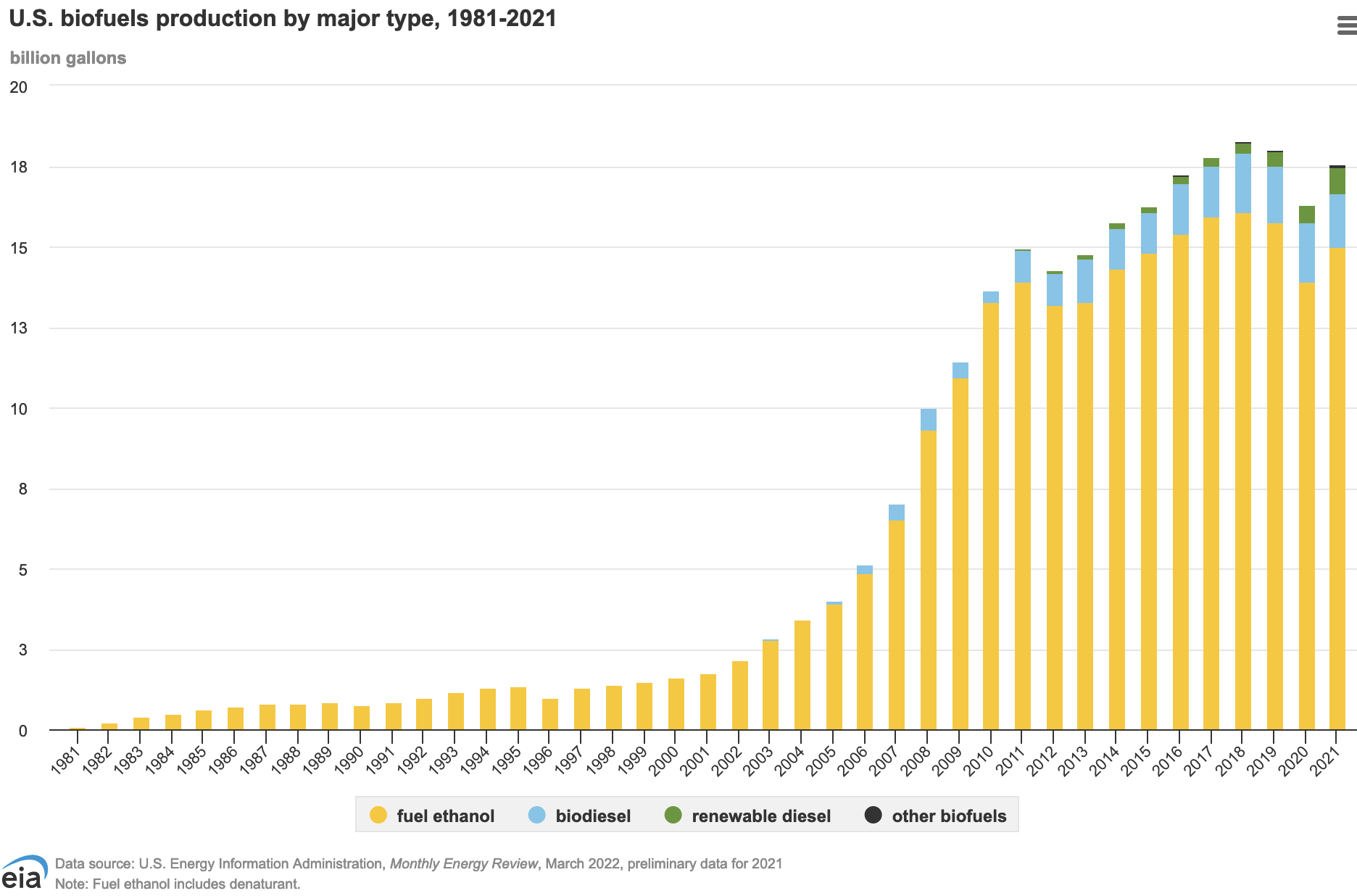
Biofuel is a type of fuel that is derived from organic matter, such as plants or animals. It is a renewable source of energy that can be used to power vehicles, generate electricity, or heat buildings. Examples of biofuels include bioethanol (from sugarcane, maize, or sugarbeet), biodiesel (from soybeans or canola), and biogas. According to the U.S. Energy Information Administration, consumption of biofuels has generally increased each year since the early 1980s due to a number of government policies and programs intended to reduce consumption of fossil fuel based fuels.
Biomass
Biomass is organic matter, such as wood, crops, or waste, that can be used as a source of fuel or energy. It is often considered to be a renewable resource because it can be replenished through natural processes. Biomass is commonly used in the production of electricity, heat, and biofuels.
One of the most common forms of biomass used in the United States is wood. A recent biomass innovation is the use of energy production of combustible biogas created from rotting organic matter found in landfills or farms.
Biomimicry
Biomimicry is a design philosophy that encourages the imitation of natural systems and structures in human creations by mimicking natural forms and shapes, including natural processes and entire ecosystems. The concept of a circular economy is an example of biomimicry, in which the economy mimics nature’s cyclical model of renewal and reuse.
In many cases, evolution has created the most efficient forms for certain uses and biomimicry can offer solutions to numerous design problems.
Bioplastics (or Bio-based Plastics)
Bioplastics, or bio-based plastics, are a type of plastic made from biological and plant-based substances — such as corn, straw, woodchips, sugarcane, or potatoes — rather than fossil fuels. They can be used in a variety of applications, including food packaging, bottles, and other products that are typically made from traditional petroleum-based plastics.
Depending on the type of feedstock and production processes used, the carbon footprint of bioplastics may not be significantly lower than that of traditional petroleum-based plastics, with some bioplastics requiring large amounts of land, water, and other resources. In addition, some types of bioplastic may not be biodegradable in all cases.
Bioswale
A bioswale is a planted water-retention ditch (aka “swale”) used to capture and filter stormwater. Bioswales are a form of green infrastructure that seeks to supplement or replace conventional stormwater treatment interventions. Bioswales utilize plants to filter contaminants out of stormwater and allow it to recharge into groundwater, as opposed to being channeled through conventional sewer systems.
Brown Power
Brown power (or brown energy) is a term depicted to denote power created through the use of non-renewable resources such as coal, oil, or natural gas. Unlike energy derived from renewable resources (“green power”), brown power typically results in much higher levels of carbon emissions and other environmental externalities, including acid rain and air pollution. Brown power also harms the environment during the extraction of the resources needed for power production.
Cage-Free
Cage-free is a term used to describe eggs laid from hens that are not kept in cages. Although cage-free hens are not confined to cages, they may not be allowed to leave the chicken coop that they are kept in. With their ability to leave the chicken coop, free-range hens have more freedom than cage-free hens.
Cap and Trade
A cap and trade system (also, “emissions trading” or “allowance trading”) is a market-based approach to controlling pollution by setting a limit, or “cap,” on the level of emissions of a specific pollutant, including carbon dioxide, that can be emitted. Companies that produce the pollutant are then required to obtain permits, called “allowances,” for each unit of pollution they produce. These allowances can be traded among companies, allowing those that are able to reduce their pollution more easily or inexpensively to sell their excess allowances to those who find it more challenging.
The overall goal of a cap and trade system is to reduce the amount of pollution by incentivizing companies to find cost-effective ways to reduce their emissions. Examples of cap-and-trade programs include The European Union Emissions Trading System, The Regional Greenhouse Gas Initiative, California’s Cap and Trade Program, and most recently, Washington State’s Cap and Invest Program.
Capsule Wardrobe
A capsule wardrobe (or eco-wardrobe) comprises a limited collection — typically 30-40 pieces — of classic clothing that is meant to be mixed and matched. There are a number of benefits to a capsule wardrobe, including cost savings, more wardrobe space, and the environmental benefits of reduced waste from unwanted clothing.
Carbon Capture and Storage (CCS)
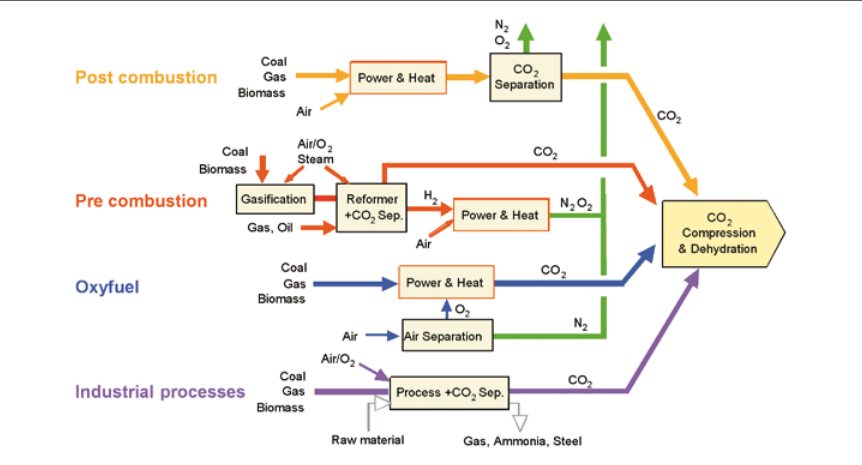
Carbon capture and storage (or carbon capture and sequestration) is a process for reducing carbon emissions from various carbon-intensive activities, including electrical generation fired by fossil fuels and industrial activities, such as steelmaking, synthetic fuel plants, or cement production. Carbon dioxide is captured before it enters the atmosphere, separated from other gases, transported, and then stored (or sequestered).
A number of technologies have emerged for carbon capture, grouped broadly as:
- pre-combustion processes that remove CO2 from fossil fuels before the completion of combustion.
- post-combustion processes that capture CO2 from exhaust gases using a liquid solvent or other separation mechanisms.
- oxyfuel combustion processes that use oxygen, rather than air, to combust fuel.
Once separated, CO2 is compressed and transported to the storage site where it is injected into rock formations deep underground for permanent storage.
See the Clean Air Task Force for an interactive map of U.S. carbon capture activities and projects.
Carbon Cycle
The carbon cycle is the process by which carbon atoms cycle or circulate through the Earth’s atmosphere plants, animals, soils, oceans, and rocks.
The natural carbon cycle has been disturbed by human activity, accelerating the release of carbon from the earth to the atmosphere through the extraction and burning of fossil fuels. This activity has caused global warming, the disruption of ecosystems, and ocean acidification.
This video by the Smithsonian’s National Museum of Natural History shows How Carbon Affects Nearly Everything on Earth – Including Our Future.
Carbon Dioxide (CO2)
Carbon dioxide is a naturally occurring, colorless, odorless gas that is present in Earth’s atmosphere. It is one of the main greenhouse gases, which traps heat from the sun and warms the planet’s surface.
Carbon dioxide is also one of the by-products of human activities — such as burning fossil fuels, burning biomass, and certain industrial processes — which causes the levels of this gas in the atmosphere to rise and contributes to global warming.
Carbon Dioxide Equivalent (CO2e)
The definition from the Organization of Economic Cooperation and Development is perfect and worth replicating here:
Carbon dioxide equivalent (CO2e) is a measure used to compare the emissions from various greenhouse gases based upon their global warming potential.
For example, the global warming potential for methane over 100 years is 21. This means that emissions of one million metric tons of methane are equivalent to emissions of 21 million metric tons of carbon dioxide.
Carbon Footprint
Carbon Footprint is the total of all greenhouse gas (GHG) emissions associated with human activity over a set time period. In short, it’s the mark humans, or human-related entities leave on the environment.
Carbon Neutral
Carbon neutral means that the carbon footprint of a person, organization, good, or process is offset in some way such that the net carbon output is at or below zero. Several companies and organizations have announced plans to achieve carbon neutrality in the coming decades to reduce their impact on the climate. Achieving carbon neutrality can be accomplished through the reduction of emissions and the purchasing of carbon offsets.
Carbon Offset
A carbon offset is a measure used to offset the carbon footprint of a good or service through the development of carbon-reducing processes. Carbon offsets can be purchased by individuals or organizations. The money is typically used to fund renewable energy projects, forest conservation, or other carbon-negative activities. A variety of organizations provide carbon offsets for sale and use the money in different ways.
Carbon Sink
A carbon sink is a natural or artificial reservoir — or pool — that accumulates and retains carbon, preventing it from being released and thus lowering the concentration of carbon dioxide in the atmosphere. A carbon sink absorbs more cargo than it releases.
Examples of carbon sinks are oceans, forests, plants, soil (stored in wetlands, peatlands, or permafrost).
Compare with Carbon Source.
Carbon Sequestration
Carbon sequestration is the process of converting atmospheric carbon into stored carbon. Carbon can be stored in carbon sinks in soil or in the ocean. One of the most basic forms of carbon sequestration is the planting of trees and other plants that store atmospheric carbon in their cells. Other forms of carbon sequestration that can reduce atmospheric carbon levels include sequestration in soil or algal carbon capture.
Carbon Source
A carbon source is a process that releases more carbon into the atmosphere than it absorbs. It is the opposite of a carbon sink. Examples of carbon sources include burning fossil fuels, excessive deforestation, and industrial livestock farming. Other natural carbon sources include volcanoes, decomposition, and fires.
Carbon Tax
A carbon tax is a tax imposed on the use of fossil fuels, such as coal, oil, and natural gas, based on the amount of carbon dioxide emissions produced during combustion. The goal of a carbon tax is to reduce greenhouse gas emissions and encourage the use of renewable energy sources.
Carbon taxes can be implemented by governments at the national, regional, or local level, and can be used to fund climate-related initiatives or to offset the negative environmental impacts of fossil fuel consumption.
Carbon taxes can be levied on businesses or individuals, and the amount of the tax is typically based on the carbon content of the fuel being used or the carbon dioxide emissions resulting from its use.
See Our World in Data’s infographics for more information on carbon taxes and the number of countries that have implemented some form of carbon tax.
Chemical Recycling
Chemical recycling — also known as advanced recycling or recovery technologies — refers to a collection of different processes that transform the chemical structure of used plastic. Chemical recycling is employed to recycle plastics (such as plastic utensils and mixed material packaging) that cannot be recycled using traditional mechanical recycling methods.
These plastics are processed using a variety of technologies to break down (or “depolymerize“) the polymer chain into its component monomers. Outputs from chemical recycling include new plastics, Naptha, fuels, waxes, and various specialty chemicals.
The most established chemical recycling technologies are:
- Pyrolysis, which converts plastic waste into synthetic crudes, such as diesel and Naptha.
- Gasification, which heats waste at a high temperature using steam or oxygen to produce synthesis gas (“syngas”). Syngas can be used as a raw material in the production of other fuels or for petrochemical processes.
Competing technologies that are still in development or pilot stages include glycolysis, hydrogenation, hydrolysis, methanolysis.
Commercial examples of chemically recycled products include Patagonia brand’s, Capilene polyester and fleece clothing, and the Hefty Energy Bag program.
Chlorofluorocarbons (CFCs)
Chlorofluorocarbons (CFCs) are a group of chemicals that contain chlorine, fluorine, and carbon atoms. They were once widely used as refrigerants, solvents, and propellants in various products but have been largely phased out due to their negative impact on the Earth’s ozone layer. CFCs are potent greenhouse gases that contribute to climate change and have a long atmospheric lifespan.
Circular Economy
A circular economy is an economic model that envisions a closed system of continual resource use. The goal is to reduce waste, reuse or up-cycle what we have, and recycle those elements that cannot be reused. This redesign of the current operating system finds its roots (no pun intended) in nature’s cyclical model, where there exists a continual cycle of renewal and reuse, and where the concept of waste as an end product doesn’t exist. Indeed, it becomes a valuable resource, as “food” for something else.
The three principles of a circular economy are:
- designing out waste and pollution
- keeping products and materials in circulation
- regenerating natural systems
The Ellen MacArthur Foundation provides an in-depth video explanation of the basics of the circular economy.
Contrast the circular economy, which calls for a rethinking of our prevailing economic system, to the traditional linear economy.
Clean Air Act
The Clean Air Act is a federal law that was enacted in 1970 to protect air quality and public health by regulating emissions from stationary and mobile sources. The Clean Air Act sets national air quality standards and establishes programs to control emissions from sources such as power plants, factories, and vehicles. The law also provides funding and technical assistance to state and local governments to help them implement and enforce the air quality standards. The Clean Air Act has been amended several times, most recently in 1990, to strengthen its provisions and expand its scope.
Clean Water Act
The Clean Water Act (CWA) is a United States federal law enacted in 1972 that regulates the discharge of pollutants into the nation’s surface waters, including lakes, rivers, streams, and wetlands. The CWA established the National Pollutant Discharge Elimination System (NPDES), which requires that all point sources (e.g., factories, sewage treatment plants) obtain a permit before discharging pollutants into the water. The CWA also established water quality standards for all contaminants in surface waters and granted the Environmental Protection Agency (EPA) the authority to enforce these standards.
Climatarian
A climatarian is a person who makes conscious and informed choices about their diet and lifestyle in order to reduce their carbon footprint and mitigate the impact of climate change. This can include choosing to eat locally-grown and organic foods, reducing meat consumption, and using eco-friendly products.
Note: Climatarian was first entered into the Cambridge Dictionary in 2016. Its definition focuses on the dietary aspect of being a climatarian and does not mention other lifestyle changes that may be part of this philosophy, such as reducing energy consumption and using eco-friendly products. The term “climatarian,” however, is not a formally recognized term and does not have a single, standardized definition. Different sources may use the term in slightly different ways, and it is possible that some people who identify as climatarians may also make other lifestyle changes in addition to focusing on their diet.
Climatarian Diet
A climatarian diet typically includes locally-grown and organic foods, while minimizing the consumption of animal products, particularly those that require large amounts of land and other natural resources to produce, such as beef and lamb. A climatarian diet can also include plant-based protein sources, such as beans, nuts, and seeds, and may exclude or minimize the consumption of processed and packaged foods. Eliminating food waste is a major goal of the climatarian diet.
Food brands and food chains, such as Chipotle and Just Salad, offer climatarian meals on their menus.
Climate
Climate is the average of weather conditions in a particular place over a long period of time, typically 30 years or more. It includes temperature, precipitation, humidity, wind, and other factors that determine the overall weather in an area.
Climate affects the natural environment as well as human activities such as agriculture, energy production, and transportation. It can also influence social and economic issues, such as health, food security, and economic development.
Climate Change
Climate change is the long-term change in the earth’s climate due to increasing levels of greenhouse gases in the atmosphere. Climate change can occur naturally, as evidenced by glacial and interglacial cycles.
Climate change that is occurring now is a human-made phenomenon resulting from the burning of fossil fuels, global deforestation, and other factors. In the next century, climate scientists predict the average temperature on earth will increase anywhere from two to over four degrees celsius.
Climate Communication
Climate communication is a field of communication studies that emerged in the late 1980s to focus on the causes and effects of climate change as well as studying the ways in which information about climate change and related issues is shared and understood by different audiences. It encompasses a wide range of activities, including public education, media coverage, scientific research, policy debates, grassroots advocacy, and public engagement.
Climate communication aims to increase understanding and awareness of the causes, impacts, and potential solutions to climate change, and to facilitate dialogue and action on this critical global challenge. Effective climate communication requires the use of clear, accurate, and accessible language, as well as the development of strategies and approaches that are tailored to the needs and interests of different audiences.
Climate Hero Ingredients
Climate hero ingredients are foods that have a lower environmental impact compared to other options and are therefore considered more sustainable food choices. These ingredients may be produced using regenerative or organic farming practices, be grown locally or with a smaller carbon footprint, or have a lower water or land use impact. Examples of climate hero ingredients include beans, nuts and seeds, and leafy greens, such as spinach, kale, and lettuce.
Climate Liability Litigation
Climate liability litigation (or climate change litigation) refers to legal action taken by individuals, organizations, or governments against parties that are believed to have contributed to climate change. These cases typically seek to hold the defendants financially responsible for the harm caused by climate change, including damages to property, health, and the environment.
Climate liability litigation can be brought through various legal channels, such as civil lawsuits, criminal charges, or international arbitration, and can involve a wide range of defendants, including governments, companies, and organizations. One example is a 2022 lawsuit brought by communities in Puerto Rico that were devastated by 2017 Hurricane Maria. It is the first climate change lawsuit against various oil industry companies and their agents that includes Racketeer Influenced and Corrupt Organizations Act (RICO) claims.
To see a list of the climate liability litigation cases currently underway, visit the Center for Climate Integrity’s Climate Liability Litigation page.
Climate System
The climate system is the Earth’s interconnected system of five components:
- the atmosphere
- the hydrosphere
- the cryosphere
- the lithosphere
- the biosphere
The climate system is driven by energy from the sun and is affected by a range of factors, including the Earth’s orbit around the sun, the composition of the atmosphere, and the amount of heat-trapping gases present. The climate system is also affected by anthropogenic activities.
Changes in the climate system can have a range of impacts on the Earth’s ecosystems, including the loss of biodiversity, sea level rise, and more frequent extreme weather events.
Closing the Loop
Closing the loop is the concept that products’ life cycles can be converted from a cradle-to-grave process into a cradle-to-cradle model. Closing the loop often refers to processes for finding alternate uses for what would typically be waste.
Colony Collapse Disorder (CCD)
Colony collapse disorder (CCD) is a phenomenon that occurs when the majority of worker bees in a honey bee colony disappear, leaving behind the queen bee and a few immature bees. This can happen for a variety of reasons that include exposure to pesticides, loss of habitat, and diseases. As honey bees are important pollinators for many plants and crops, CCD can have serious consequences for the beekeeping industry, as well as for the broader ecosystem.
Community Choice Aggregation (CCA)
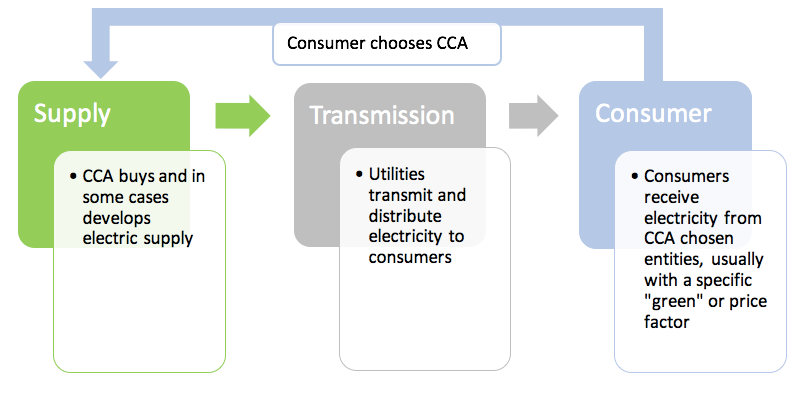
Community Choice Aggregation is a bulk power purchasing program that gives communities, municipalities, and other entities the ability to purchase electrical power as a group. CCAs choose the power source–typically renewable energy sources–while the local utility continues to transmit and distribute the electricity. The utility also maintains the responsibility for infrastructure maintenance.
Through the aggregation of a community’s purchasing power, CCAs work to lower electricity rates and determine the power source for the group. To date, eight U.S. states have enacted CCA enabling laws: California, Illinois, Massachusetts, New Jersey, New York, Ohio, Rhode Island, and Virginia.
Community Solar
Community solar (also known as solar gardens or shared solar) is a type of solar energy system that is owned and operated by a group of individuals, typically within a specific geographic area or community. This type of system allows individuals who may not have the ability to install solar panels on their own property — such as renters or those with shaded roofs — to still access the benefits of solar energy.
With community solar, a group of individuals comes together to finance and build a large solar installation, often on a piece of property that is owned by the community or a local government. The electricity generated by the solar panels is then distributed among the members of the community who have signed up for the program.
As of December 2021, 22 states and Washington, D.C. have policies that support community solar deployment. While at least one community solar project exists in 39 states, Washington, D.C., and Puerto Rico, nearly three-quarters of the market is concentrated in just four states (Minnesota, New York, Massachusetts, and Florida).
Community Supported Agriculture (CSA)
These are networks that offer consumers regular deliveries of locally-grown farm products. See the U.S. Department of Agriculture for a directory of CSAs.
Compost
Compost is a natural fertilizer made from decayed and decomposed organic material, such as plant matter, paper, and food waste. Compost is a soil amendment that contains nutrients and beneficial organisms to condition and fertilize potted plants, gardens, yards, and even agricultural operations.
Compostable
Compostable means that within a compost environment, a product can break down into natural elements (carbon dioxide, water, inorganic compounds, and biomass) in around 90 days.
A “compost environment” is typically a commercial facility that adheres to national and international standards and these general criteria:
- Timing. The product must achieve 90% disintegration in around 90 days.
- Disintegration. The product must demonstrate a 60% conversion to carbon dioxide within 180 days.
- Toxicity. The product leaves no toxicity in the soil.
Confirmation Bias
Confirmation bias (or confirmatory bias) is the tendency to interpret information to complement our preconceptions of the world. Instead of scrutinizing our existing beliefs or ideas, we often seek sources that only serve to confirm our opinions.
Often without premeditation, we construe data in certain ways, pay attention to a small set of sources, and ignore or forget contradictory information and examples. It is much easier to enforce previously held ideas than to evaluate the evidence anew, especially at the risk of a sense of security. We have not evolved to handle the excess of information and complex decision-making in daily life, so confirmation bias and other biases act as cognitive shortcuts to conserve mental energy.
According to the behavioral psychologist Daniel Khaneman, co-author of the seminal work Thinking Fast and Slow, there is, unfortunately, little we can do to curtail our individual confirmation biases. Even with awareness and understanding of the phenomena, confirmation bias is an ingrained habit. It can be identified in other individuals or groups.
Conservation
Conservation is a philosophy that calls for the protection of natural landscapes, wildlife, or resources. Governments often play a role in conservation by passing laws that prohibit the extraction or utilization of resources or land in certain areas.
At the federal level, the National Park Service, Bureau of Land Management, Fish and Wildlife Service, and the U.S. Forest Service are the key regulatory bodies that conserve land and resources across the country and regulate land usage.
Private entities and not-for-profits also play a vital part in helping to conserve open spaces. The main organizations include The Nature Conservancy, Sierra Club, National Audubon Society, and Ocean Conservancy.
Cradle-to-Cradle
Cradle-to-cradle design is a philosophy that reduces waste generated through the production of goods. Cradle-to-cradle design makes use of material that would otherwise be a byproduct of production or waste. This design approach also ensures that a product can be reused once its primary use has ended.
An essential part of a circular economy, you can learn more about the cradle-to-cradle model in Cradle to Cradle: Remaking the Way We Make Things, by Michael Braungart & William McDonough.
Contrast with Cradle-to-Grave.
Cradle-to-Grave
Cradle-to-grave design is the conventional lifecycle of a product, where it is disposed of once it has served its purpose. Cradle-to-grave goods often have a much larger environmental impact because they deplete resources faster than cradle-to-cradle design methods.
Contrast with Cradle-to-Cradle.
Deadstock Fabric
Deadstock fabric is excess or leftover fabric that is no longer needed or wanted by the original manufacturer or retailer. This can include fabric that was overproduced, fabric that was ordered but never used, or fabric that is left over from canceled orders or discontinued styles.
Deadstock fabric is often of high quality and can be used to make new products, but it can be difficult to find a market for it because it is not part of the regular production cycle. In the context of sustainable fashion, by repurposing deadstock fabric, fashion designers and brands can reduce their waste and environmental impact, and they can also create unique and one-of-a-kind products.
Decarbonization
Decarbonization is the process of reducing the amount of carbon in the atmosphere, typically by reducing carbon emissions from the burning of fossil fuels.
Decarbonization is often seen as a key strategy for combating climate change and achieving a sustainable future. This can be accomplished through a variety of means, including the use of renewable energy sources, energy efficiency measures, and carbon capture and storage technology.
Decarbonization is also sometimes referred to as “low-carbonization” or “carbon-neutralization.”
Decompose
Decomposition is a biological process where organic matter breaks down into more simple forms. Products that are able to decompose are considered safer for the environment because they have a shorter lifespan when compared to products that do not decompose. Inorganic materials such as plastic take many thousands of years to decompose. Composting is an intentional form of decomposition.
Deforestation
Deforestation refers to the conversion of trees from a forested area to a non-forested area. Forests act as natural carbon sinks and the widespread removal of trees can affect the balance of the carbon cycle, releasing carbon into the atmosphere and contributing to global warming.
In addition, deforestation can lead to soil erosion, loss of habitat for plant and animal species, and reduced water quality. Deforestation can have negative impacts on local communities that rely on forests for their livelihoods.
Disposables
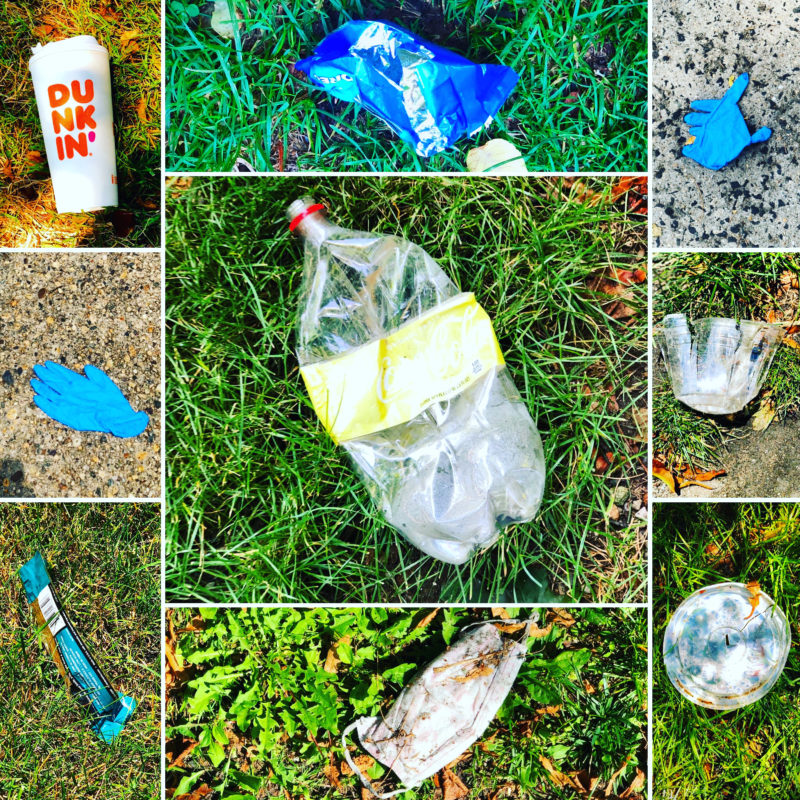
Disposables are products designed to be thrown away after a single use or a few uses.
Examples include razors, cameras, plastic, and paper shopping bags, diapers, dryer sheets, and plastic snack bags.
See also Single-Use.
Distributed Energy Resource (DER)
A distributed energy resource (DER) is a small-scale electricity generation or storage system that is located close to the end user, rather than at a central power plant. These systems are often located “behind the meter” on the customer side of the electric meter and can include technologies such as rooftop solar panels, small wind turbines, and energy storage systems.
DERs are part of the broader category of distributed generation, which refers to the generation of electricity from many small, decentralized sources rather than a few large, centralized ones.
Downcycle
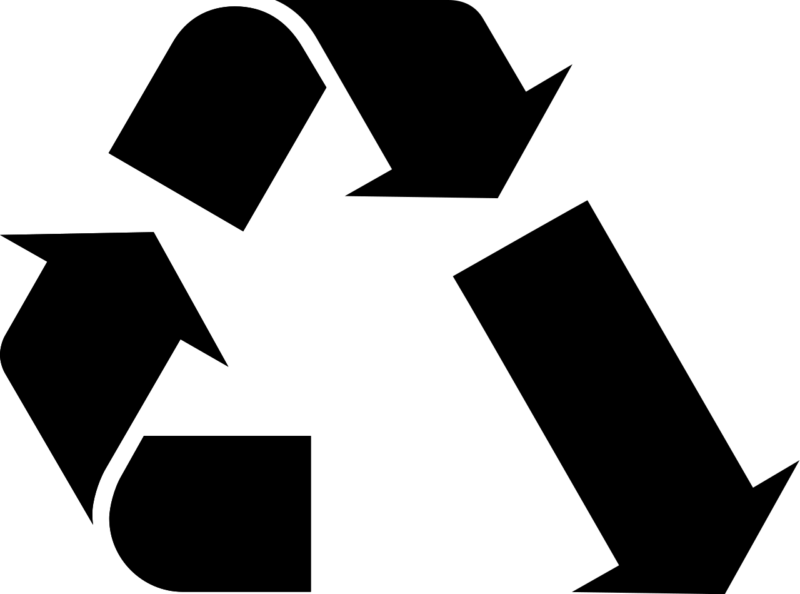
The opposite of up-cycle. Also known as downstream recycling.
This is the process of recycling material into one of lesser quality or value. In other words, its quality and value are downgraded through the process of recycling. Most likely, this down-cycled product will not be recyclable when discarded.
Many plastic products, such as plastic bags and bottles, are downcycled. Other examples include recycled paper or even creating rags from clothing.
While the process of downcycling is a form of recycling, a downcycled item soon makes its way to the landfill.
Dual-Stream Recycling
Dual-stream (vs single-stream) recycling is a type of recycling in which recyclable materials are separated by the consumer into different recycling bins for pickup; typically one bin for commingled materials (containers, bottles, cans), and a second for mixed paper (cardboard, paper).
Durable
Ecocide
Ecosystem
An ecosystem is all of the living and non-living natural features of a particular area. Ecosystems include populations of animals, plants, and other living creatures as well as non-living components such as bodies of water. Understanding the role that humans play is an important part of ecosystem ecology.
Energy Star
Energy Star certification is a government-backed program that recognizes and promotes energy-efficient products and buildings. The program is run by the Environmental Protection Agency in the United States, and the Natural Resources Canada in Canada. In order to earn Energy Star certification, a product or building must meet strict energy efficiency criteria set by the EPA or NRCan. Products with the Energy Star label are independently certified to save energy and money, and protect the environment.
Environmental Justice
Environmental justice refers to the fair treatment and meaningful involvement of all people regardless of race, color, national origin, or income with respect to the development, implementation, and enforcement of environmental laws, regulations, and policies. The movement aims to address systemic injustices that have subjected certain groups to bearing a disproportionate amount of the negative impacts of environmental degradation.
Environmental Justice emerged as a movement in the United States in the 1980s, when marginalized communities and individuals began to speak out against the unequal distribution of environmental burdens and benefits, such as hazardous waste facilities and pollution.
Most recently, the Biden Administration, through its Justice40 Initiative, was the first Administration to integrate environmental justice as a whole-of-government effort into federal policies.
Effluent
Effluent is waste–typically in the form of liquid refuse or sewage–that is discharged from industrial sites or wastewater treatment plants, into a body of water. Effluent can be the treated water that is released into a water body regularly, or in overflow, events can also be untreated sewage. In combined sewer systems, effluent also includes treated or untreated stormwater.
Eutrophication
Eutrophication is the excessive growth of algae in water bodies due to increased nutrient input. Bodies of water are prone to eutrophication when nutrients are deposited into them at high rates. The most common nutrients that end up in water bodies are nitrogen and phosphorus from agricultural runoff. The increasing use of synthetic fertilizer in conventional agriculture has resulted in the eutrophication of several bodies of water throughout the country.
Extended Producer Responsibility (EPR)
EPR is a policy model that shifts responsibility from consumer to producer. First proposed in 1990 by Thomas Lindhqvist of Lund University, EPR is an incentive strategy for producers to create more environmentally friendly products by making them bear the internal end-of-life costs of their products and packaging. The main goal of EPR is to connect end-of-life waste management costs to the companies that manufacture plastic products and packaging.
For a detailed look at EPR as a policy tool for combatting plastic pollution, see Green That Life’s post: Targeting the Real Plastic Pollution Culprits: Extended Producer Responsibility
Fairtrade Certification
Fairtrade certification is a product certification method carried out by a third-party organization. The certification sets standards for the production of goods without the economic exploitation of producers and ensures that producers are paid a living wage.
The Fair Trade Certified Mark is the certification method most commonly used in the U.S. and Canada. The Fair Trade Certified website includes a searchable database for certified products.
Fast Fashion
Food Miles
Food Scrap (or Waste) Recycling
Forever Chemicals
“Forever Chemicals” is the common term used for PFAS chemicals, a class of chemicals known for their persistence in breaking down in the environment and the human body.
See PFAS Chemicals and Green That Life’s articles on Forever Chemicals and PFAS in Products.
Fossil Fuels
Fossil fuels are sources of fuel that are created over millions of years from the decomposition of organic matter. Some examples of fossil fuels are coal and petroleum. Fossil fuels are sources of sunk carbon, so burning them adds carbon into the atmosphere that was previously buried.
Freegan
Freeganism is an ideology that promotes the reuse of wasted food and other goods. Freeganism aims to reduce the number of new resources needed to support oneself. Freeganism has emerged as a response to the growing trend of consumerism throughout the world.
Free-Range
Free-range animals are animals that have access to land and are not confined to a barn or coop all day. Free-range can refer to animals that have unlimited access to pasture land but also can refer to animals that spend the majority of their lives indoors with only occasional access to open-air pens.
Animal advocates argue that free-range animals are treated more fairly than those raised using conventional agriculture techniques.
“Front of the Meter”
“Front of the meter” refers to electricity generation that is produced and consumed on-site. These systems are typically owned and operated by utilities or other companies, and the electricity they produce is sold to end users through the grid. Examples include utility-scale power plants, large battery storage systems, and power transmission systems. Front of the meter power generation is also sometimes referred to as the “generation side” of the electric grid.
Contrast with “behind the meter.”
Geoengineering
Geoengineering (or climate engineering) refers to a range of emerging technologies and techniques that are designed to intervene in the Earth’s climate system in order to mitigate or reverse the effects of climate change.
These techniques are generally categorized into two groups:
- Solar Radiation Management (SRM), also known as solar engineering, refers to techniques that aim to reflect a small portion of the sun’s energy back into space in order to cool the Earth. Examples include 1) increasing the reflectivity of clouds (albedo enhancement); 2) spraying reflective particles into the stratosphere; 3) constructing a giant space shade.
- Carbon geoengineering, also known as carbon dioxide removal (CDR), refers to techniques that aim to remove carbon dioxide from the atmosphere in order to mitigate global warming. Examples include 1) afforestation and reforestation, which removes CO2 through the process of photosynthesis; 2) ocean fertilization, which stimulates the growth of CO2-absorbing phytoplankton; 3) carbon capture and sequestration methodologies, including direct air capture, to remove CO2 directly from the ambient air; 4) enhanced weathering, which accelerates natural weathering to expose minerals with atmospheric CO2 before sequestering the resulting compound; 5) biochar, in which biomass is “charred” and buried to sequester carbon.
Geothermal Energy
Geothermal energy is a form of renewable energy created from the heat generated by the radioactive decay of materials deep within the earth’s crust. It can be tapped to generate electricity or used in residential and commercial buildings for heating or cooling purposes.
A variety of technologies are employed to generate electrical power from geothermal energy, including dry steam, flash steam, and binary steam. These geothermal power plants use steam from underground wells to drive a steam turbine that in turn, activates a generator to produce electricity.
In residential or commercial applications, geothermal heating and cooling can replace existing HVAC systems by drawing upon the thermal energy naturally stored below ground to provide heating and cooling. The thermal energy is exchanged with a fluid circulating through an underground loop of pipes and then passes through a heat pump to provide heated or cooled air to the building. In winter, the heat pump extracts heat from the subsurface to warm the building. In summer, the process works in reverse by transferring heat from the building to the fluid to the ground and then returning cool air back into the building.
Global Warming

Global warming is the gradual increase in the temperature of the Earth’s climate system since pre-industrial levels primarily due to an increase in greenhouse gas emissions caused by human activities.
By contrast, climate change is the change in weather conditions due to human and naturally-induced warming.
Grasscycling
Grasscycling is a landscaping technique where grass clippings are left on a lawn after mowing. Grasscycling is meant to build soil health by allowing grass clippings to decompose and enrich the soil. Grasscycling is one of many organic landscaping methods that can reduce the need for artificial fertilizers.
Grass-Fed
Grass-fed means that an animal, usually a cow, was fed on a grass diet as opposed to a grain diet before being slaughtered or begins producing milk. While most cows start their lives on a mixture of milk and grass, most cows are moved to a grain diet after their first year of living. Grass-fed cows are fed on a mostly grass diet and some advocates believe this is a more natural diet for cattle.
Gray Infrastructure
Gray infrastructure refers to the built environment, such as roads, bridges, buildings, and other constructed features, that are designed to support human activities and functions. The term is commonly used in discussions of urban planning and development and can also refer to the infrastructure needed to support various human activities, such as water and wastewater systems, transportation networks, and energy generation and distribution.
Contrast gray infrastructure with green infrastructure.
Greenhouse Effect
“Greenhouse effect” is one of those green terms and phrases that you’ve heard of but aren’t quite sure of its meaning. The greenhouse effect is a natural process in which greenhouse gases in the atmosphere trap heat from the sun, warming the surface of the Earth. Without the greenhouse effect, the Earth would not be warm enough to sustain life.
The problem is that human activities are increasing the level of greenhouse gases in our atmosphere. The increase in greenhouse gases causes the earth’s atmosphere to trap more heat and contributes to global warming.
This infographic from the Australian Government provides an excellent visual explanation of the greenhouse effect.
Greenhouse Gases (GHG) and GHG Emissions
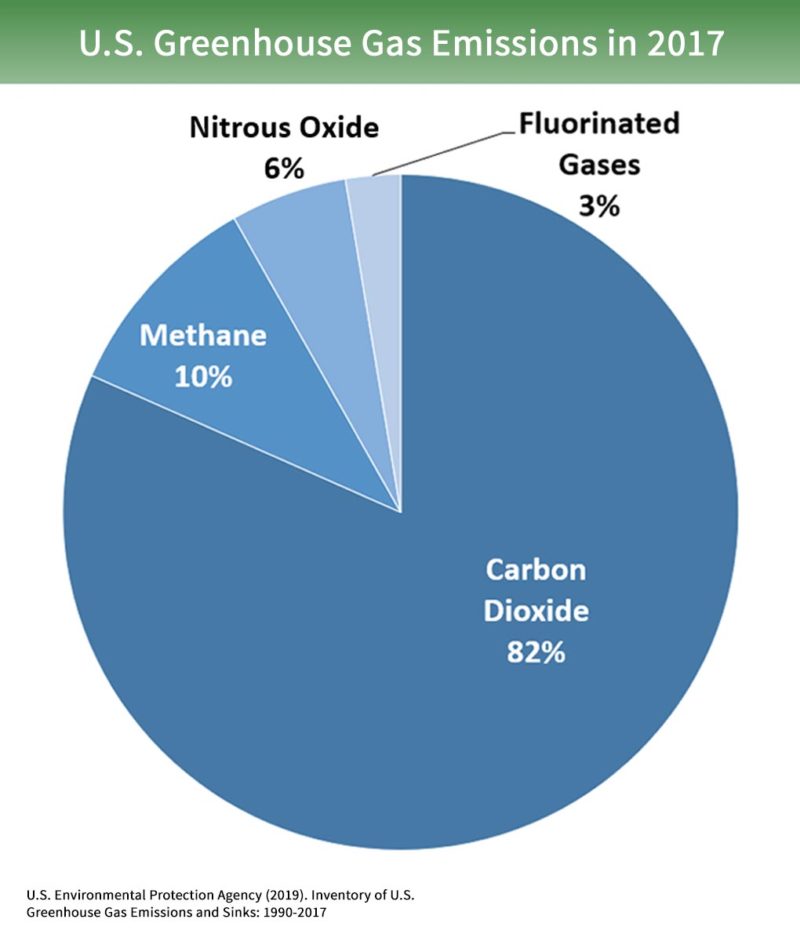
A greenhouse gas (GHG) is a gas that absorbs and traps heat in the atmosphere.
Since it represents the largest share of GHG emissions, it’s tempting to speak of carbon dioxide as if it’s the only greenhouse gas, but there are many more:
- Water vapor
- Carbon Dioxide
- Methane
- Nitrous Oxide
- Ozone
- Chlorofluorocarbons
- Hydrofluorocarbons
For a more in-depth overview of greenhouse gases, see the EPA site on GHG Emissions.
Greenhouse Gas Protocol
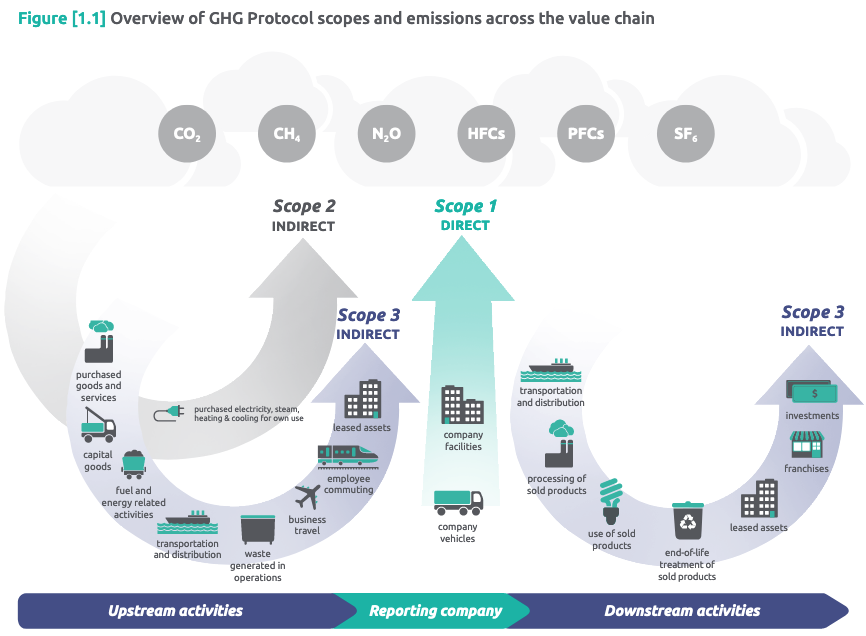
The Greenhouse Gas Protocol, which was created by the World Resources Institute and World Business Council for Sustainable Development, is the global standard framework for measuring and managing greenhouse gas emissions from private and public sector operations, value chains and mitigation actions.
The GHG Protocol employs a number of different greenhouse gas accounting standards that are used by governments, industry associations, NGOs, businesses, and other organizations. These include the Corporate Standard, the GHG Protocol for Cities, the Mitigation Goal Standard, the Corporate Value Chain Standard, the Policy and Action Standard, the Product Standard, and the Project Protocol.
The GHG Protocol categorizes greenhouse gas emissions into three scopes:
- Scope 1 covers direct emissions from core operations: owned or controlled sources, such as on-site combustion or company-owned transportation fleets.
- Scope 2 covers indirect emissions, such as emissions from a company’s purchased electricity, steam, heating, and cooling.
- Scope 3 includes all other indirect emissions that occur in a company’s value chain, including upstream and downstream business activities.
Green Hydrogen
Green hydrogen is a type of hydrogen that is produced from renewable energy sources — including wind and solar power — to split water molecules (H2O) into oxygen (O2) and hydrogen (H2) via an electrochemical reaction.
Since no greenhouse gases are emitted in the production of green hydrogen, it is considered a cleaner source of hydrogen than industrial hydrogen, which employs fossil fuels for production and power.
Green hydrogen is one of several types of color-coded hydrogen gases. The assigned colors are used to differentiate the type of production process employed. Due to high production costs, green hydrogen represents a small percentage of total hydrogen gas.
Green Infrastructure
Green infrastructure refers to natural systems and technologies that are designed to manage and conserve the natural environment. This can include landscape features and systems such as green roofs, bioswales, rain gardens, permeable pavement, and other types of natural infrastructure that help to manage stormwater runoff and improve air and water quality.
Green infrastructure can also incorporate natural features, such as trees and vegetation, which can provide a range of environmental benefits, including reducing the urban heat island effect, improving air quality, preserving biodiversity, and providing habitat for wildlife.
Green Roofs
Green roofs are rooftops that are partially or completely covered with vegetation, typically for the purpose of managing stormwater or reducing the impact of urbanization on the environment. This vegetation can include a variety of plants, shrubs, and even small trees.
Green roofs are a form of green infrastructure and can provide a number of benefits, including improved air quality, reduced stormwater runoff, and increased insulation to increase energy efficiency and help lower energy costs. Green roofs can also provide a habitat for wildlife and improve the aesthetic appeal of a building.
Greenwash
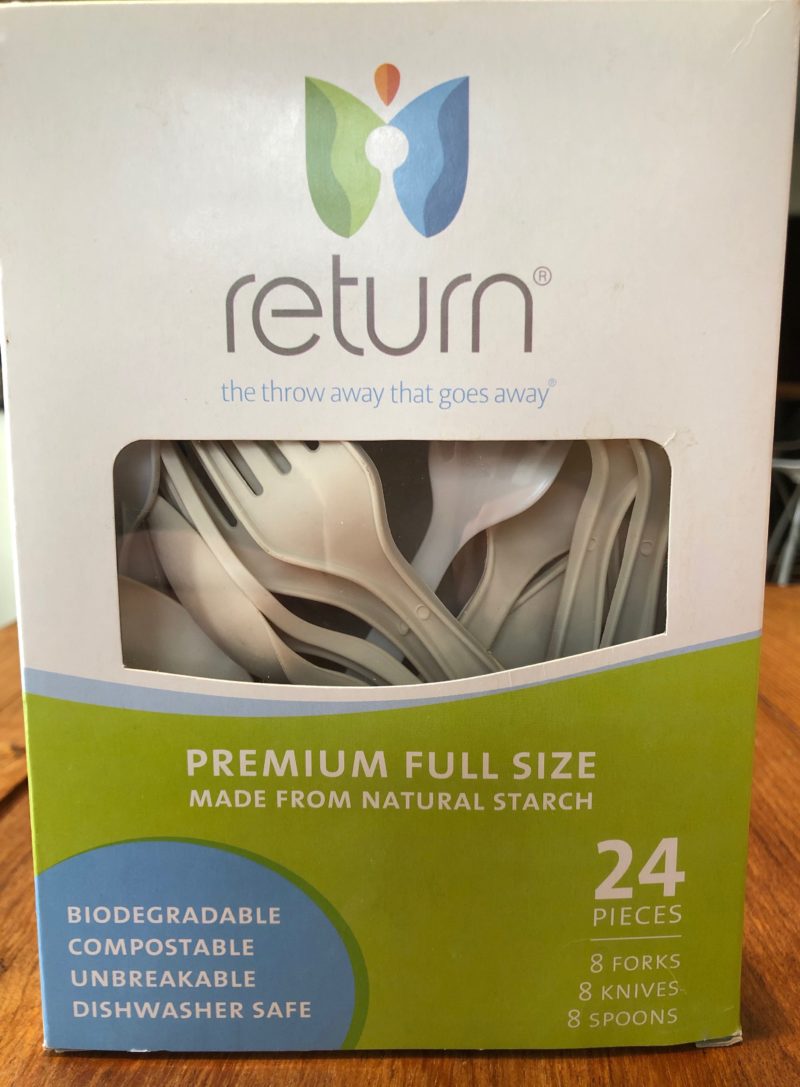
The act of greenwashing is a manufacturer’s attempt — through deceptive marketing efforts — to create the impression that a product is natural or has environmental benefits, even when it doesn’t.
Green That Life covers a few examples of greenwashing in these in-depth posts:
- Green or Greenwashing? How to Clean Up Cleaning Products Confusion
- The Green Starbucks Cup: Green or Greenwashing?
- 3 Surprising Greenwashing Examples: Keep America Beautiful campaign; recycling; and “natural” gas
- Are Compostable Products Really Compostable? How to Tell and Which to Get
- Greenwashing Alert: Is Chemical Recycling the Solution to Plastic Pollution?
“Greenwash” is one of those essential terms and phrases that pops up in every industry or business sector. It’s important to understand and learn how to spot it. As such, I’ve written an entire post about greenwashing that includes tips for how to avoid it.
Greywater
Greywater is (non-fecal) water that is produced from sinks, showers, baths, and other appliances. Greywater is not safe for consumption but recently has begun to be recycled for use in toilets. Greywater can also be used to water ornamental plants.
Guerilla Gardening
Guerilla gardening is a type of gardening where gardeners do not own the land they work on. Common forms of guerilla gardening involve spreading seeds on public or vacant land for aesthetic or environmental purposes.
Heat Pump
A heat pump is a type of mechanical system that uses a small amount of energy to move heat from one location to another. This process, known as heat transfer, allows heat pumps to provide heating, cooling, and hot water to buildings.
Heat pumps work by using a refrigerant, which is a substance that can easily change from a liquid to a gas and back again. The heat pump has two parts: an indoor unit, called an evaporator, and an outdoor unit, called a condenser.
In the summer, the heat pump works by moving heat from the indoor air and transferring it to the outdoor air, providing cooling to the building. In the winter, the heat pump reverses the process, moving heat from the outdoor air and transferring it to the indoor air, providing heating to the building.
Heat pumps are often used as an alternative to traditional heating and cooling systems, such as furnaces and air conditioners, and can be used in a variety of different settings, including homes, offices, schools, and commercial buildings. They are also commonly used in ground source heat pump systems, which use the earth’s natural heat to provide heating and cooling.
Because they use a small amount of energy to move heat rather than generate it, they are generally more efficient and can help to reduce energy costs.
HVAC
HVAC is the acronym for heating, ventilation, and air conditioning. HVAC systems are some of the most energy-intensive systems within the built environment. Investing in building insulation can reduce the need for large, energy-intensive HVAC systems.
Hybrid Car
Hybrid cars are run with a traditional internal combustion engine and electric motor. The electric motor is charged through a process called regenerative braking that generates power from the car’s wheels. Hybrid cars typically have lower levels of emissions and higher miles per gallon than gas cars.
Hypermiling
Hypermiling is a group of techniques one can use to improve your car’s efficiency. Hypermiling can improve fuel efficiency by over 30%. Some examples of hypermiling techniques include maintaining appropriate tire pressure, coasting instead of braking, and minimizing the loads that are kept in your car.
Impervious (or Impermeable) Surface
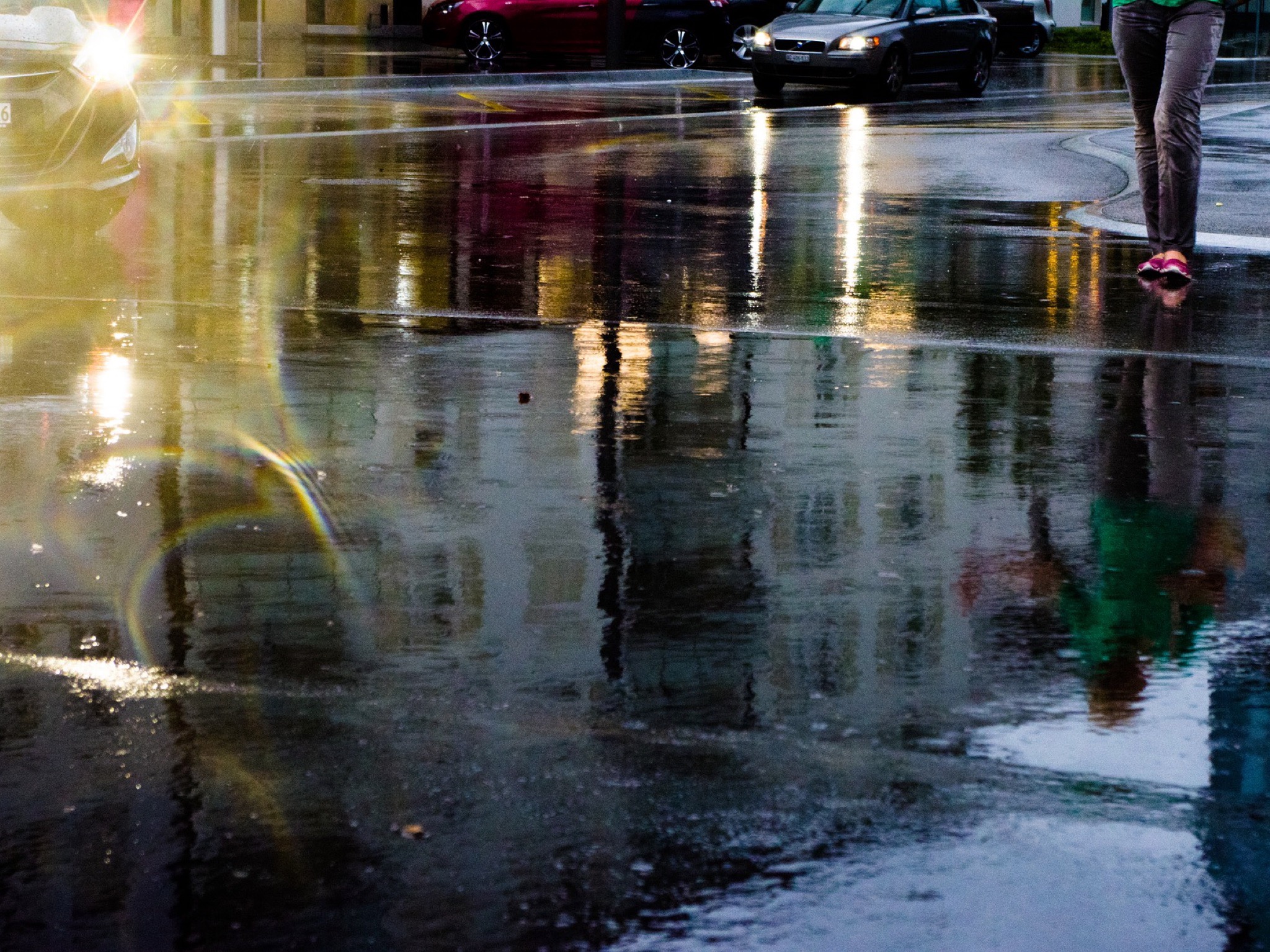
Impervious, or impermeable, surfaces are surfaces that cannot absorb water. Examples include sidewalks, streets, parking lots, driveways, patios, and roofs. Impervious surfaces are a major cause of excess stormwater runoff during rain events which can be damaging to ecosystems when runoff carries accumulated pollutants and litter into water bodies. In general, urban areas have higher concentrations of impervious surfaces than rural or natural landscapes.
Contrast with Permeable Surfaces.
Integrated Pest Management (IPM)
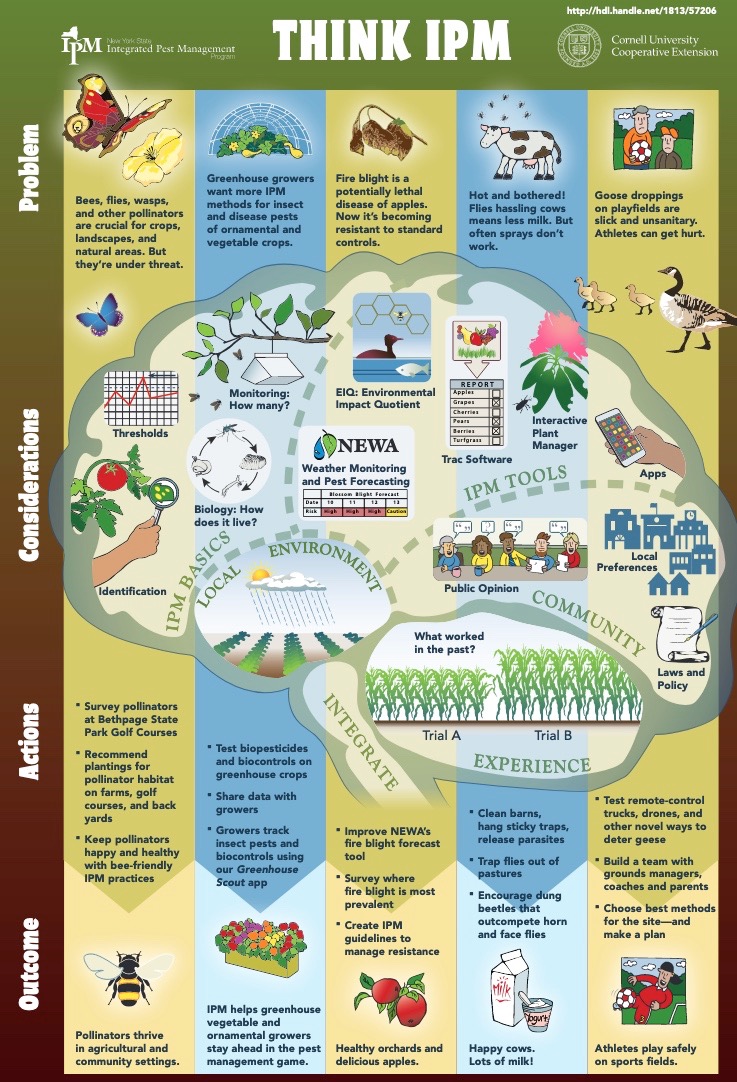
Integrated pest management (IPM) is a form of pest control in agriculture that limits the use of pesticides and other harmful practices by integrating a variety of biological, organic, cultural, mechanical, and chemical tools. Types of controls include:
- Biological, including the use of beneficial insects as a natural pesticide to keep unwanted pests at bay.
- Mechanical, including mulching, weeding, and/or improving drainage.
- Cultural, including planting native plant species in appropriate locations.
For more information about IPM, see Cornell University’s IPM page.
International Panel on Climate Change (IPCC)
The Intergovernmental Panel on Climate Change (IPCC) is the United Nations body for assessing the science related to climate change. It was created in 1988 by the United Nations Environment Programme (UNEP) and the World Meteorological Organization (WMO) to provide government entities and political leaders with periodic scientific assessments concerning climate change and its implications and risks, as well as to propose adaptation and mitigation strategies. The IPCC currently comprises 195 member states.
IPCC authors, who are experts in climate science and other relevant fields, volunteer their time to assess and summarize the findings of thousands of scientific papers published each year on the drivers of climate change, its impacts and future risks, and how adaptation and mitigation can reduce those risks.
The IPCC has three working groups and a task force:
- Working Group I deals with the physical science basis of climate change.
- Working Group II deals with impacts, adaptation and vulnerability.
- Working Group III deals with the mitigation of climate change.
- Task Force on National Greenhouse Gas Inventories that develops methodologies for measuring emissions and removals.
Temporary task groups are formed from time to time to address a specific topic or question.
Invasive Plant Species
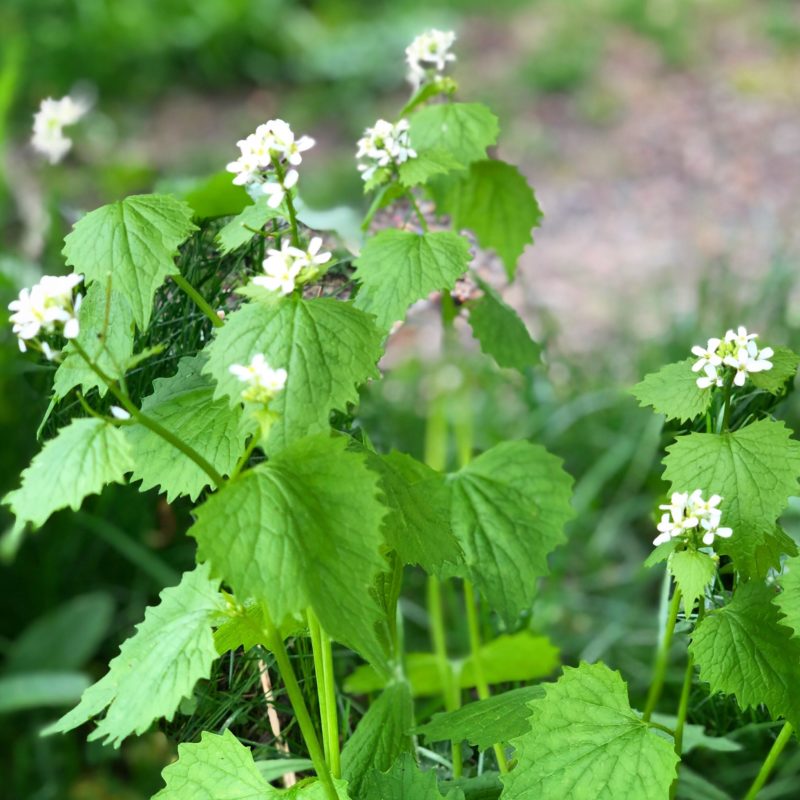
This is a type of plant species that is a non-native plant that is also able to grow and spread quickly, causing environmental harm or harm to human health.
For more information on invasive plant species and how to control them, visit the U.S. Department of Agriculture page on Invasive Species.
Contrast with Native Plant Species and Non-native Plant Species.
Justice40 Initiative
Justice40 Initiative is the Biden Administration’s whole-of-government effort to ensure that Federal agencies work with states and local communities to deliver at least 40 percent of the overall benefits from Federal investments in climate and clean energy, including sustainable transportation, to disadvantaged communities.
The Justice40 Initiative was created on January 27, 2021, with President Biden’s execution of Executive Order 14008, Tackling the Climate Crisis at Home and Abroad.
Just Transition
A just transition is a framework for transitioning to a sustainable and equitable future while taking into account the needs of workers and communities that are potentially affected by the transition. The goal of a just transition is to ensure that the costs and benefits of the transition are shared fairly and that no one is left behind. This may involve providing support for workers in job retraining programs, as well as instituting economic and social measures to help communities adapt to the changes. A just transition is often associated with the transition from a high-carbon to a low-carbon economy.
Keeling Curve
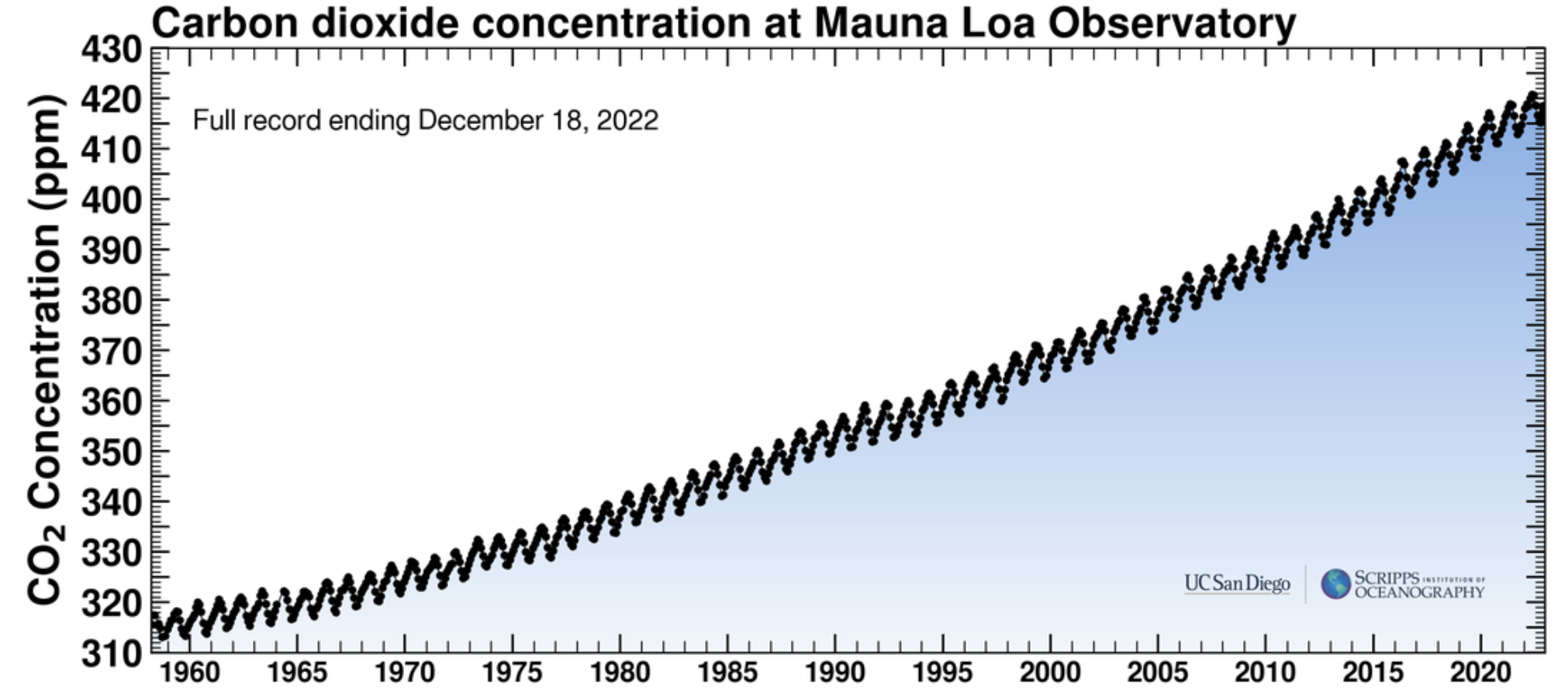
The Keeling Curve is a daily record of global atmospheric carbon dioxide concentration maintained by Scripps Institution of Oceanography at UC San Diego. It is named after Charles David Keeling, the scientist who began the measurements. The Keeling Curve graph depicts the continuous increase in atmospheric carbon dioxide concentrations measured at Mauna Loa Observatory in Hawaii since the 1950s.
For more background on the Keeling Curve, including its history, educational videos, and various iterations of the Keeling Curve, visit the Keeling Curve site maintained by UC San Diego.
For related information, see: parts per million (ppm)
Keystone Species
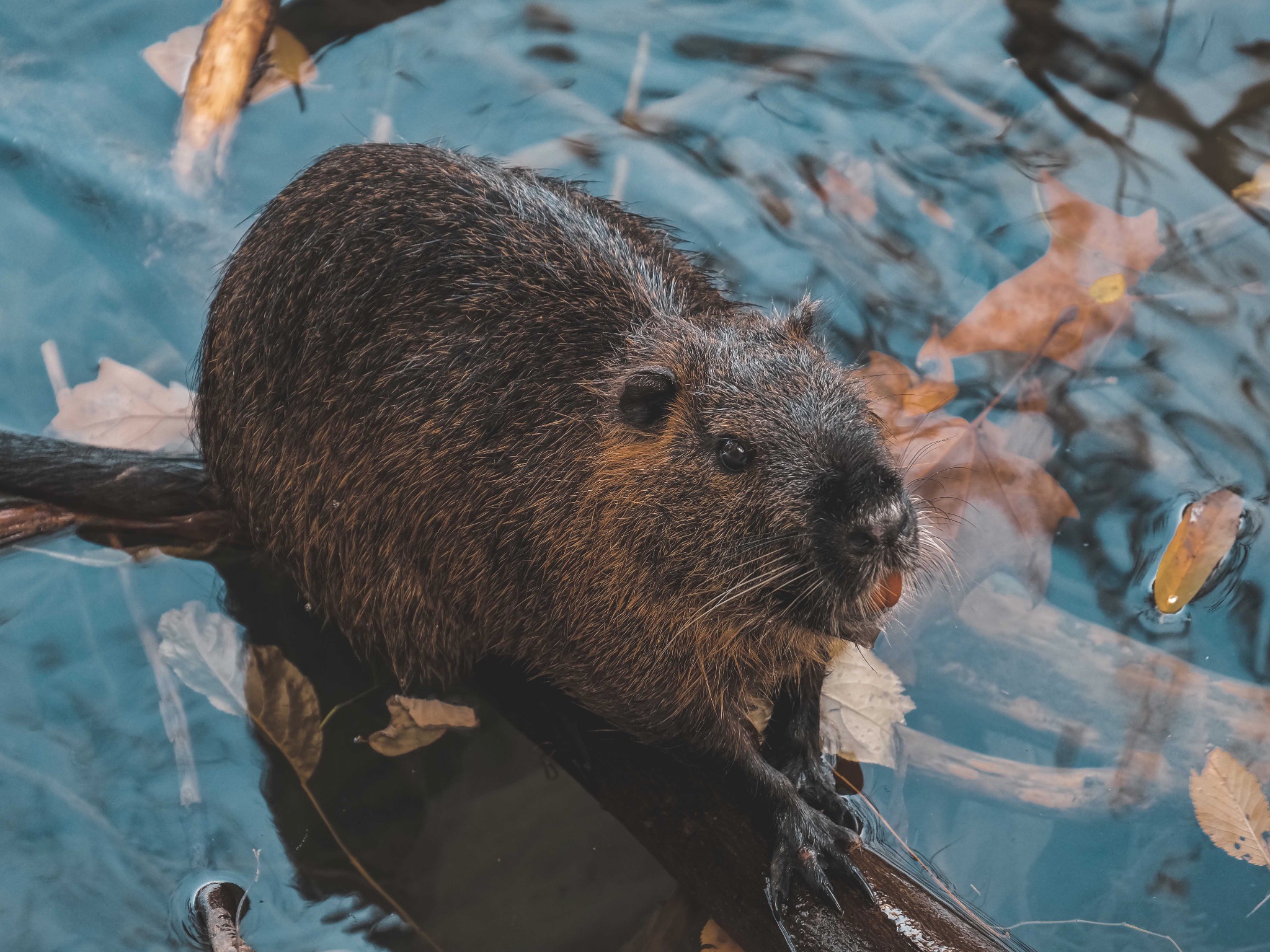
Just as the wedge-shaped keystone at the top of an archway supports the structural integrity of the entire archway, a keystone species is the species upon which all others within a particular ecosystem depend. Removal of the keystone species would significantly alter the ecosystem in which they exist.
A keystone species can be any living organism — from a predatory wolf to a specific fungus — and they typically fall into three general categories:
- Predators that maintain a balance in the ecosystem through population control. Examples: grizzly bears, sea stars, sharks, jaguars, wolves.
- Ecosystem Engineers that maintain the structure of the ecosystem through their ability to control their physical environment. Examples: prairie dogs, beavers, African savanna elephants.
- Mutualists that comprise two or more species engaged in mutually beneficial interactions. Examples: pollinators, such as hummingbirds, or bees
Landfill
A landfill is a plot of land designated for the disposal of solid waste. Also known as a “dump,” landfills are constructed to dispose of non-recyclable waste. Organic waste that is left in landfills generates greenhouse gases, primarily in the form of methane. In fact, landfills are the third-largest source of methane in the U.S., accounting for 17.7 percent of all U.S. methane emissions.
In addition, landfills are a contributor to local pollution by creating smog, water, and soil pollution. Landfills lower land values in nearby properties because they are unattractive and can be a health hazard.
Leadership in Energy and Environmental Design (LEED)
LEED is an internationally recognized sustainability certification program developed by the US Green Business Council for the built environment. Buildings are assessed across a number of metrics, including location, materials and resources, water efficiency, energy performance, CO2 emissions reduction, and improved indoor air quality.
Though most well-known as a certification system for buildings, LEED also has designations for neighborhoods and communities. LEED certifications are assessed using a point system across four categories: certified, silver, gold, and the highest, platinum. The rating system can be applied to both new and existing buildings.
Lifecycle Assessment (LCA)
Life-cycle assessment (LCA) is a systematic approach to evaluating the environmental impacts of a product or service over its entire life cycle, from raw material extraction to production, use, and disposal. LCA is often used to assess the environmental impact of products and systems in order to inform decision-making and identify opportunities for improvement.
The main phases of an LCA are:
- Goal and scope definition to define the goals and scope of the study. This includes identifying the product or service being evaluated, the functional unit (the unit of measurement used to compare the environmental impacts of different products or processes), and the impact categories of interest (e.g., greenhouse gas emissions, water use, land use).
- Inventory analysis phase to collect data on all inputs and outputs of the product or service being evaluated, including raw materials, energy, water, as well as emissions, or waste.
- Impact assessment phase to quantify and evaluate the environmental impacts of the product or service using appropriate impact assessment methods. This may include calculating the greenhouse gas emissions associated with the product or service or estimating the impact on air or water quality.
- Interpretation phase to analyze and interpret the results of the LCA to understand the environmental impacts of the product or service. This may involve comparing the environmental impacts of different products or processes, or identifying areas where the environmental impacts can be reduced.
- Reporting phase to present the results of the study in a clear and concise manner, typically in the form of a written report. The report may include recommendations for improving the environmental performance of the product or service.
Lifestyles of Health and Sustainability (LOHAS)
LOHAS stands for lifestyles of health and sustainability, which is a demographic identified by consumers who place more value on personal wellbeing and sustainability. Certain types of products and services are popular among the LOHAS demographic, such as organic produce, hybrid and electric cars, and ecotourism.
Linear Economy
The linear economy is our traditional economic model of “take, make, and dump.” Instead of reusing valuable resources, products are disposed of – or dumped – when their useful life has ended.
Contrast with a circular economy.
Locavore
A locavore (or sometimes, localvore) is someone who only eats food grown or produced in a local area. The term was coined by Jessica Prentice in 2005 as a project to encourage residents in the San Francisco Bay Area to consume food grown or harvested within a 100-mile radius. The definition of what constitutes “local” has since changed with some arguing for a tighter radius of 50 miles while others advocate expanding the radius to as much as 150 miles.
Locavores contend that eating foods sourced locally ensures a more nutritious and fresher meal, but is also more environmentally friendly as locally produced foods typically have a lower carbon footprint than foods that need to be shipped from locations that are farther away.
Long Duration Energy Storage (LDES)
Long duration energy storage (LDES) refers to technologies that can store large amounts of electricity for extended periods of time, typically several hours to several days. These emerging technologies are important for balancing the supply and demand of electricity on the grid and for integrating renewable energy sources, such as wind and solar power, which are intermittent and unpredictable.
Some examples of long duration energy storage technologies include pumped hydroelectric storage, compressed air energy storage, and advanced battery systems. These technologies can help to increase the reliability and resilience of the electricity grid and reduce the need for fossil fuel-based power generation.
Maladaptive Actions
Maladaptive action refers to behaviors or actions that are harmful to the environment and hinder an individual’s or community’s ability to adapt to the changing climate. These actions may include practices that contribute to increased vulnerability to climate change or increased greenhouse gas emissions through the burning of fossil fuels, deforestation, or over-consumption.
Maladaptive actions can also include behaviors that put individuals or communities at risk, such as failing to prepare for extreme weather events or ignoring the potential impacts of climate change on food, water, and other resources.
Managed Retreat
Managed retreat refers to the planned and deliberate relocation of people and infrastructure away from areas that are vulnerable to natural hazards or environmental degradation. This can include coastal areas prone to sea level rise and storms, or areas at risk of landslides, flooding, or wildfire.
Managed retreat can also involve the restoration of natural systems or the creation of green infrastructure to mitigate the impacts of these hazards. The goal of managed retreat is to reduce the risk of loss of life and property, while also protecting natural habitats and ecosystems.
Materials Recovery Facility (MRF)
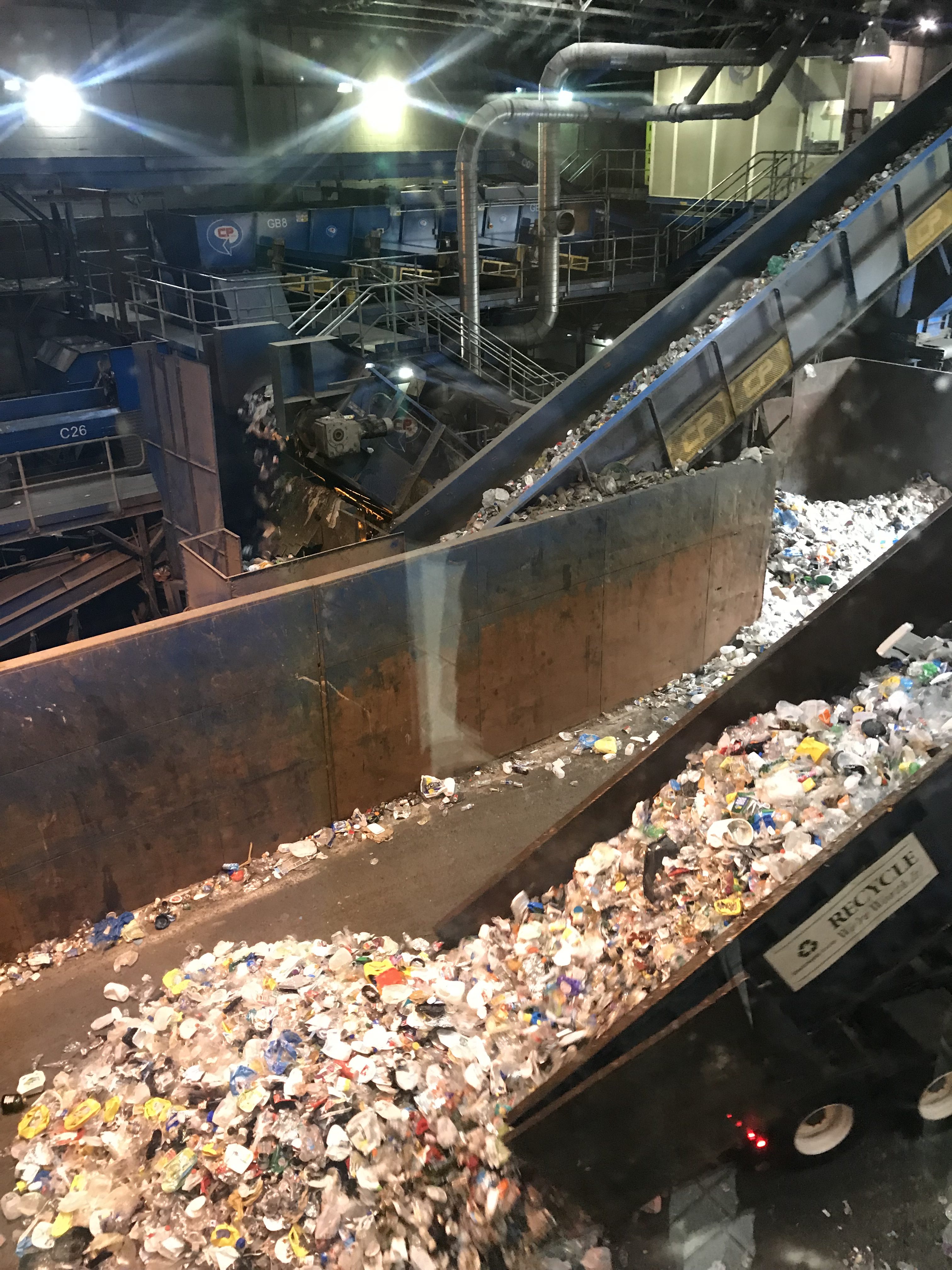
A Materials Recovery Facility (MRF, pronounced “murf”) is a facility that is designed to separate, sort, and package recyclable materials for sale. MRFs follow the same general process of receiving mixed waste, which is then dumped on a conveyor belt. Magnets and cameras sort material based on size, weight, electromagnetic properties, and other features.
There are two broad MRF categories:
- “Clean” MRFs process commercial or residential unsorted (single-stream) recyclable materials.
- “Dirty” MRFs process commercial or residential trash to recover recyclables that were incorrectly thrown away in the trash. Dirty MRFs require more manual labor and cost to sort through the trash. A sub-component of a Dirty MRF is a “Wet” MRF that incorporates water to process and clean recyclables.
Methane (CH4)
Methane is a colorless, odorless gas that is present in Earth’s atmosphere. It is the second-most abundant manmade greenhouse gas after carbon dioxide and traps 28 times more heat than CO2. Methane is included as one of six greenhouse gases to be mitigated under the Kyoto Protocol.
Methane comes from natural sources and anthropogenic activities:
- Natural sources of methane include wetlands, melting permafrost, livestock, and swamps.
- Human-caused sources of methane include landfills, oil and natural gas systems, agricultural activities, coal mining, stationary and mobile combustion, wastewater treatment, and certain industrial processes.
For more information about methane’s impact on climate change, visit the Global Methane Initiative.
Microgrid
A microgrid is a small-scale, stand-alone electricity grid that is capable of operating independently — or “islanding” — from a utility grid in the event of grid outages.
Microgrids often use a combination of renewable energy sources, such as solar and wind, to generate electricity locally. They are designed to improve energy security, increase the reliability of the electricity supply, and reduce the reliance on fossil fuels.
Until recently, microgrids were constructed primarily to service college campuses, hospitals, fire stations, and military bases, but they are now being built to also serve a single building, a group of buildings, or an entire community. Microgrids can also be used to provide electricity to areas that are not connected to the main grid, such as remote communities or disaster-stricken areas.
For an updated list and map of the nation’s microgrid, visit the Microgrid Installation Database.
Microplastics
Microplastics are small pieces of plastic that are less than five millimeters in size. These particles come from a variety of sources, including the breakdown of larger plastic items, as well as from microbeads found in personal care products.
Microplastics are found everywhere, including human blood, but are most commonly found in marine environments. A recent study estimates that roughly 14 million tons of microplastic exist on the entire ocean floor.
Microplastics are a concern because they can be ingested by marine life and other organisms, causing harm to ecosystems and potentially entering the food chain. They can also be transported through the air, leading to their widespread distribution throughout the environment.
Mitigation
In a climate change context, mitigation refers to actions or strategies that are intended to prevent the flow of heat-trapping greenhouse gases by reducing emission sources and/or enhancing the sinks that store greenhouse gases.
Mitigation can involve a range of approaches, such as increasing the use of renewable energy sources, improving energy efficiency, implementing regulatory measures — such as cap and trade programs — and promoting conservation and sustainable land use practices. The overall goal of mitigation is to slow or halt the progression of climate change by reducing the level of greenhouse gases in the atmosphere.
Contrast with Adaptation.
Municipal Solid Waste (MSW)
Municipal solid waste is the trash or garbage generated by residents of a municipality. According to the EPA’s definition, MSW includes bottles and corrugated boxes, food, grass clippings, sofas, computers, tires, and refrigerators. It does not include construction and demolition (C&D) debris, municipal wastewater sludge, and other non-hazardous industrial wastes.
Municipal solid waste is often collected by garbage collectors and disposed of in a landfill or waste incinerator, or if the waste is recyclable, it is transported to a recycling facility.
According to the EPA, the total generation of MSW in 2017 was 267.8 million tons or 4.51 pounds per person per day. Of the MSW generated, approximately 67 million tons were recycled and 27 million tons were composted, representing a 35.2% recycling and composting rate. In addition, more than 34 million tons of MSW (12.7%) were combusted with energy recovery and more than 139 million tons of MSW (52.1%) were landfilled.
One component of MSW that is increasingly being separated from landfill waste is unwanted food, or “food scraps.” In a number of towns and cities, food scrap recycling programs have been created to divert food waste from landfills to special composting facilities that can transform the scraps into natural fertilizers.
Naked Packaging
Naked packaging, also known as “unpackaged” or “package-free” products, refers to products that are sold without any packaging or with minimal packaging. Naked packaging is often used as a way to reduce waste and the environmental impact of packaging materials, as well as to promote transparency and simplicity in product packaging. Naked packaging can be found in a variety of product categories, including food, personal care, and household products.
National Sword Policy
This doesn’t really qualify for Green Terms and Phrases, but it’s a term that impacts our recycling policies nationwide and is worthy of an explanation.
For decades, the U.S. and other countries had shipped various types of solid waste to China. In fact, as of 2018, China consumed 55% of the world’s scrap paper and was a major importer for many recyclables.
In 2018, however, China passed its National Sword Policy that imposed bans and impossibly low contamination standards on 24 types of waste material that it typically imported from the U.S.
The new purity standards for imported recyclable products have increased from 90-95% to 99.95%. Products covered in the ban include plastic, paper, and solid waste.
What does this mean for the industry? Commodity prices for these types of materials have plunged, making the business of selling recyclable materials unprofitable.
What does this mean for Americans? In many areas of the country, you could see an increase in recycling costs. Or municipalities may choose to keep costs down by incinerating recyclables.
While National Sword is bad news for recycling, it also is an opportunity for us to rethink our lifestyle habits and reduce consumption.
Nationally Determined Contributions (NDCs)
Nationally Determined Contributions (NDCs) are commitments made by countries under the United Nations Framework Convention on Climate Change (UNFCCC) to reduce their greenhouse gas emissions, enhance their carbon sinks, and outline resiliency and adaptation measures. The NDC is a unique climate action plan and reflects the country’s own circumstances, capabilities, and priorities. Each party to the Paris Agreement is required to establish an NDC and update it every five years.
Native Plant Species (“Natives”)
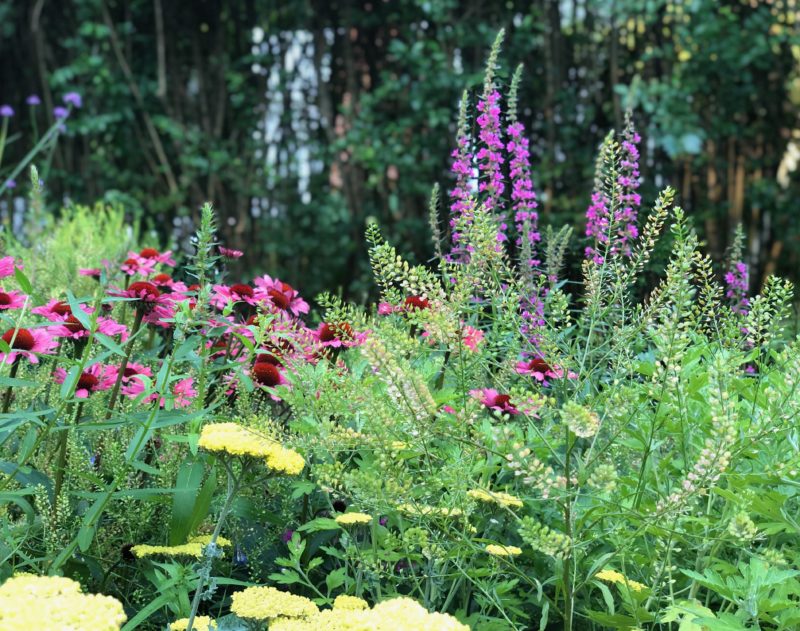
A native plant is one that is indigenous to a particular region and has evolved over hundreds or thousands of years in that specific environment. Native plants are well-adapted to the climate and conditions of their local area, and they play a vital role in supporting the overall health and diversity of the ecosystem. Native plants provide habitat and food for native wildlife, and they can also help prevent soil erosion and improve air and water quality.
Contrast with Invasive Plant Species and Non-native Plant Species.
Naturalized Plant
A naturalized plant is a non-native species that has been introduced to an area outside of its natural range and has successfully established itself in the local ecosystem. Naturalized plants can reproduce and spread on their own without the need for human intervention and they can interact with and potentially impact the existing flora and fauna of the area.
While some naturalized plants may not cause any harm, others can become invasive and disrupt local ecosystems.
Contrast with Native Plant Species.
Negawatt
A negawatt is a shortened term for “negative watt.” It is a theoretical measurement of energy that refers to units of saved energy made by a consumer through conservation measures. In other words, it is watts of energy that the consumer has not used due to the use of various energy-saving methods, such as reducing the use of heat or electricity in one’s home.
The term was coined in 1989 by Amory Lovins of the Rocky Mountain Institute in response to his observations of excessive energy use. Over half of all energy generated in the United States is estimated to be wasted. Lovins outlined ways to achieve energy efficiencies that would also realize cost savings.
Net Metering
Net metering is a service that provides credits to owners of onsite renewable energy systems — typically solar panels — for their surplus power. Excess power generated by the system is transferred back to the electrical grid, enabling the owners to offset their utility bill for the amount added to the grid. The customer is thus billed for their “net” energy usage.
Net metering mechanisms, implementation, and procedures vary widely from state to state. To date, 41 states have implemented some type of net-metering policy for roof-top and/or community-solar owners.
Net Zero
The Intergovernmental Panel on Climate Change defines net zero as that state when “anthropogenic emissions of greenhouse gases to the atmosphere are balanced by anthropogenic removals over a specified period.”
Simply put, attaining net zero emissions means that residual, or unavoidable, greenhouse gas emissions emitted by an entity–person, company, nation–are canceled out by mechanisms that absorb or offset those emissions. So, when a company makes a pledge of net zero emissions by a future date, it is committing to achieving a balance of zero emissions in its operations by that date.
Following the Paris Agreement’s goal of rapid decarbonization to limit global warming to a preferred 1.5 degrees Celcius (compared to pre-industrial levels), many companies have targeted 2050 as their net zero target date. This is the date by which climate scientists believe the world must achieve carbon neutrality in order to avoid the catastrophic effects of human-caused climate change.
The key point to remember is that making a net zero pledge is not the same as making a pledge to end activities that produce greenhouse gas emissions. Think of a net zero corporate pledge as more like an emissions management program that allows continued emissions but removes them from business operations via other means.
Non-Native Plant Species
A non-native plant, also known as an exotic or alien plant species, is one that has been introduced to an area outside of its natural range. Non-native plants can often thrive in new environments, particularly if they do not have natural predators or diseases to keep their populations in check. Some, but not all, non-native plants are invasive species.
Non-native plants can be introduced intentionally, such as for ornamental purposes, or they can arrive accidentally through human activities such as trade and travel.
Contrast with Invasive Plant Species and Native Plant Species.
Non-Point Source Pollution
Non-point source pollution (NPS) refers to pollution that originates from an unidentifiable source or a variety of sources. NPS pollution occurs when excess stormwater or snowmelt runoff mixes with pollutants and travels over and in the ground, eventually making its way into lakes, rivers, coastal waters and other waterways.
According to the Environmental Protection Agency, NPS can include:
- Excess fertilizers, herbicides, and insecticides.
- Oil, grease, and toxic chemicals from urban runoff and energy production.
- Sediment from improperly managed construction sites, crop and forest lands, and eroding streambanks.
- Salt from irrigation practices and acid drainage from abandoned mines.
- Bacteria and nutrients from livestock, pet wastes, and faulty septic systems.
Contrast with Point Source Pollution.
Nurdles
Nurdles are small, pellet-sized plastic beads that are used as raw material in the manufacturing of plastic products. They are typically made from petroleum-based polymers, and they are melted and molded into a wide range of products, from food packaging and water bottles to toys and textiles.
Nurdles are a major source of marine plastic pollution and can be harmful to wildlife and the environment. Nurdles can also break down into microplastics.
Organic and the Organic Seal
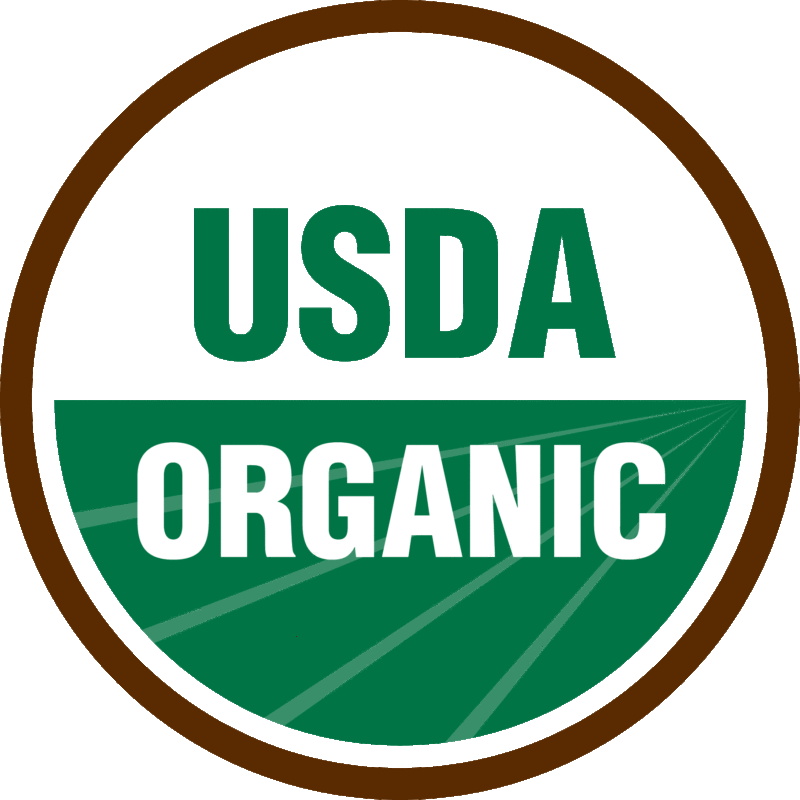
The “organic” seal is a certification system created by the US Department of Agriculture to designate produce and food products that have been produced without the use of pesticides, synthetic fertilizers, irradiation, or genetic engineering techniques.
According to the USDA, organic products use production methods that use “cultural, biological, and mechanical practices that support the cycling of on-farm resources, promote ecological balance, and conserve biodiversity.”
To obtain certification, a product undergoes an organic certification process that follows established production, handling, and labeling standards, including soil quality, animal raising practices, and pest and weed control. The enforcement entity, the National Organic Program, ensures the integrity of products with the organic seal and that manufacturers follow proper production methods.
There are four labeling categories for organic products:
- 100 percent organic. Products must be made of 100% certified organic ingredients.
- Organic. Product and ingredients must be certified organic, except where specified on the National List of Allowed and Prohibited Substances.
- “Made with” organic ingredients. These are products made with multiple ingredients, some of which are organic. In this category, at least 70% of the product must be made using certified organic ingredients.
- Specific organic ingredients. These are products that use less than 70% certified organic ingredients. They can list their certified organic ingredients but cannot use the USDA Organic Seal.
Paris Agreement
The United Nations Paris Agreement is a legally binding international treaty on climate change adopted by 196 parties on December 2015 in Paris, France, at the 21st session of the Conference of the Parties (COP) to the UNFCCC.
The main goal of the Paris Agreement is to limit global warming to well below 2 degrees Celsius above pre-industrial levels and to pursue efforts to limit the temperature increase to 1.5 degrees Celsius. The Paris Agreement also aims to strengthen the ability of countries to deal with the impacts of climate change and to provide financial resources to help developing countries transition to clean energy.
Particulate Matter
Particulate matter, also known as particulate pollution or PM, refers to tiny solid particles or liquid droplets suspended in the air. These particles can come from a variety of sources, including vehicle emissions, construction activities, power plants, wildfires, and dust storms.
Particulate matter can be inhaled into the lungs and cause health problems, such as respiratory and cardiovascular diseases. The size of particulate matter is measured in micrometers (µm), and particles that are 10 µm or smaller, known as PM10, are the most harmful because they can be inhaled into the deepest parts of the lungs.
Parts Per Million (ppm)
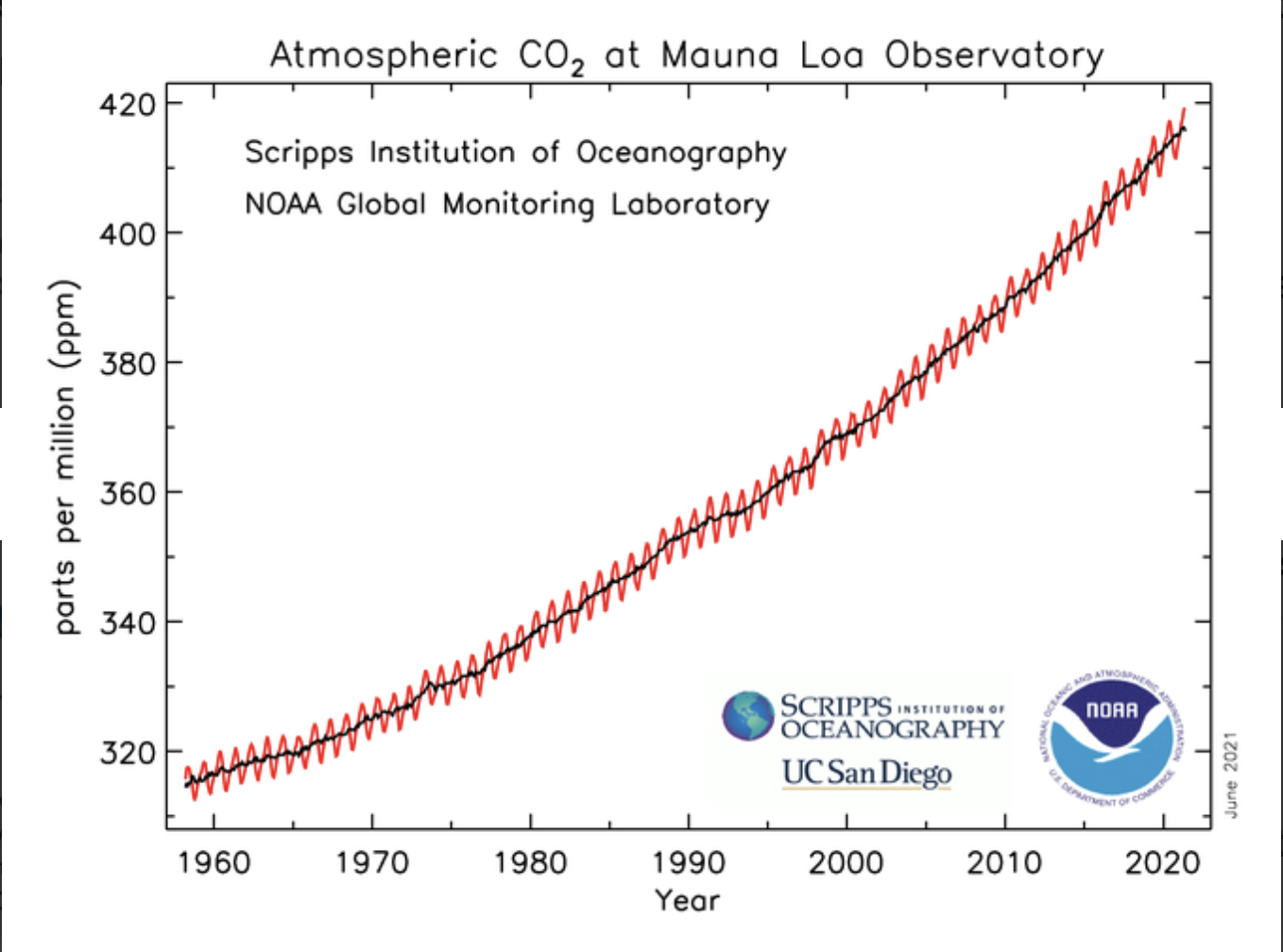
Parts per million (ppm) refers to the concentration of a substance in water or soil. In the context of climate change, ppm is used to measure the concentration of a greenhouse gas, typically carbon dioxide, in the Earth’s atmosphere.The concentration of carbon dioxide in the atmosphere has risen from 280 ppm before the industrial revolution to over 420 ppm today. Climate experts at the 2016 Intergovernmental Panel on Climate Change warned of carbon dioxide levels exceeding 430 ppm.
You can see the latest measurement of carbon dioxide ppm on NASA’s Vital Signs of the Planet page.
For related information, see: Keeling Curve.
Peaking Power Plant
A peaking power plant (or peaker plant) is a type of power plant that is designed to meet the demand for electricity during times of high usage, such as on hot summer days when air conditioning usage is high.
Peaking power plants are able to start up quickly and adjust their output to meet changing demand. They are often powered by natural gas or other fossil fuels and are typically used to supplement the output of base-load power plants that provide a steady supply of electricity but are not able to respond quickly to changes in demand.
Permafrost
Permafrost is a portmanteau word: the combination of ‘permanent’ and ‘frost.’ It is defined as ground that stays frozen for a minimum of two years. Almost a quarter of the terrain in the North Hemisphere is considered permafrost, as this type of terrain is most commonly found in mountainous regions or near the North and South Poles.
Permafrost has been Earth’s largest terrestrial carbon sink — containing soil and organic materials (as well as rock, sediment, and ice). Rising temperatures due to climate change, however, have caused the permafrost to thaw and fracture, releasing greenhouse gases.
Similar to a bag of frozen vegetables, the dead plants and animals frozen in permafrost for thousands of years decay or rot once de-thawed. The warmed permafrost in turn releases carbon dioxide (CO2) in the presence of oxygen and methane (CH4) in the absence of oxygen. This process is autocatalytic or self-reinforcing: the release of greenhouse gases, particularly methane, contributes to the climate crisis and the resulting warmer temperatures thaw more permafrost, and so on.
The changing terrain of melting permafrost has negatively impacted the infrastructure of many arctic communities and the ability of subsistence indigenous people, such as the Intuit, to find food. Permafrost can also store ancient pathogens. Human and animal populations, immunologically unfamiliar with these microbes tucked away in ice sheets for millennia, could become very sick.
Permeable Surfaces
Permeable surfaces are surfaces that allow water to pass through them. The most obvious permeable surface is dirt, however, engineers have now created permeable pavements that will allow water that lands on them to recharge into groundwater. Permeable surfaces prevent the runoff of stormwater and other liquids.
Contrast with impermeable or impervious surfaces.
Petrochemicals
Petrochemicals are chemicals that are derived from petroleum or natural gas. These chemicals are used in a wide range of products, including plastics, paints, detergents, and pharmaceuticals. Petrochemicals are a key component of many consumer and industrial products and make up 99% of all plastics.
PFAS (Per- and Polyfluoroalkyl) Chemicals
PFAS — also known as “forever chemicals” — are a class of manufactured fluorinated chemical substances found in consumer products, drinking water, and industrial practices. Technically known as per- and polyfluorinated compounds, there are nearly 5,000 of these forever chemicals, all grouped into one category, known as PFAS.
The most common and widespread chemicals in the PFAS group are perfluorooctanesulfonic acid (PFOS) and perfluorooctanoic acid (PFOA). Used for their non-stick (PFOA) and cleaning (PFOS) properties, these chemicals are no longer manufactured but have been replaced by other PFAS substances, such as GenX.
For an in-depth overview of PFAS chemicals, see Green That Life’s articles on PFAS Chemicals and PFAS Chemicals in Consumer Products.
Point Source Pollution
Point source pollution refers to pollution that originates from one identifiable source. The Environmental Protection Agency (EPA) defines point source pollution as “any single identifiable source of pollution from which pollutants are discharged, such as a pipe, ditch, ship, or factory smokestack.”
Examples of point sources of pollution:
- effluent from sewage treatment plants and factories
- emissions from power plants
- toxic chemicals from oil and chemical refineries
- waste from wood, paper and pulp mills
- automobile, and electronics manufacturers
Point source water pollution is regulated by the Clean Water Act through the National Pollutant Discharge Elimination System (NPDES). Per NPDES, point source emitters must obtain a permit from their state and EPA before they can discharge waste or effluents into any body of water. Point source air pollution is regulated by the Clean Air Act.
Contrast with Non-point Source Pollution.
Polyethylene vinyl acetate (PEVA)
Post-consumer
Post-consumer refers to materials or products that have been used by consumers and are no longer in their original form. In the context of recycling and waste management, post-consumer materials are those that have been collected and processed for reuse or recycling after being used by consumers. These materials may include paper, plastic, glass, and metal products that have reached the end of their useful life and are no longer needed by their original users. Post-consumer materials can be recovered and used to create new products, reducing the demand for virgin materials and the environmental impact of resource extraction.
Preconsumer
Pre-consumer waste is waste generated in the production of a product before it reaches a consumer. An example of pre-consumer waste would be scrap metal created by a metal press that is discarded.
Preemption
A preemption law is a law passed by a higher legislature that overrides — preempts — the law or ordinance of a lower governing body. The lower legislature is thus restricted in its ability to implement and pass local regulations, ordinances, and laws.
Examples of preemption laws include ones related to workers’ rights, gun control, marijuana decriminalization, and even budget reductions in police departments. Preemption laws in the area of environmental protection include those related to plastic bag and packaging bans, disposable straw bans, and regulations on pesticides.
For a list of preemption laws in the U.S., see the Policy Surveillance Program’s state preemption laws map and profile descriptions.
Rain Garden
A rain garden is a type of green infrastructure — a landscaped area designed to capture, filter, and use stormwater runoff from impervious surfaces such as roofs, driveways, and sidewalks.
Rain gardens are usually shallow basins filled with native plants and grasses that are able to tolerate both wet and dry conditions. They are typically located near the source of runoff and are designed to temporarily store and filter the water before it infiltrates into the ground.
Rain gardens can help reduce erosion, improve water quality, and reduce the amount of stormwater runoff that flows into streams and rivers, helping to protect local ecosystems and reduce the risk of flooding.
Redlining
Redlining is a discriminatory practice that systematically denies or limits individuals access to mortgages, insurance, and other financial services, based on the racial or ethnic composition of a community. This practice was widespread in the United States during the mid-20th century and was officially banned by the Fair Housing Act of 1968.
In an environmental justice context, redlining causes systemic injustices by excluding marginalized communities from decision-making processes that affect their living conditions. These injustices can lead to inadequate access to resources such as clean air and water and increased exposure to environmental hazards. Redlining can also prevent these communities from participating in efforts to protect and improve their local environment.
Regenerative Agriculture
Regenerative Agriculture is a form of agriculture that emphasizes the remediation of depleted soils through organic and non-synthetic processes. This is achieved by seeking to mimic natural cycles through practices such as using cover crops, incorporating crop rotation, and the use of organic fertilizers. These practices help to improve soil structure, increase soil organic matter, and promote healthy ecosystems. As a result, regenerative agriculture can help to improve crop yields, reduce the need for synthetic fertilizers and pesticides, and mitigate climate change by capturing carbon in the soil.
While regenerative agriculture and sustainable agriculture both focus on reducing the environmental impact of farming, regenerative agriculture takes additional steps with the goals of improving biodiversity and ecosystem functioning.
Regenivore
A regenivore is a person who actively supports and engages in regenerative agriculture practices. Regenivore lifestyles often involve choosing to eat locally-grown and sustainably-raised foods, supporting regenerative farmers and businesses, and participating in activities that promote soil health and regeneration. The goal of a regenivore is to contribute to a more sustainable and regenerative food system that benefits both the environment and communities.
Renewable Energy
Renewable energy is energy that is derived from natural sources, such as sunlight, wind, water, and geothermal heat, and is replenished either constantly or within a short timeframe.
Renewable energy technologies, such as solar panels and wind turbines, can help reduce reliance on non-renewable sources of energy that depend on the combustion of fossil fuels that cause greenhouse gas emissions.
Repair Cafe
These are community workshops with tools and materials to repair broken items yourself. Or you can enlist an expert to help.
Visit the Repair Cafe site for a list of locations, or to start your own.
Rewilding
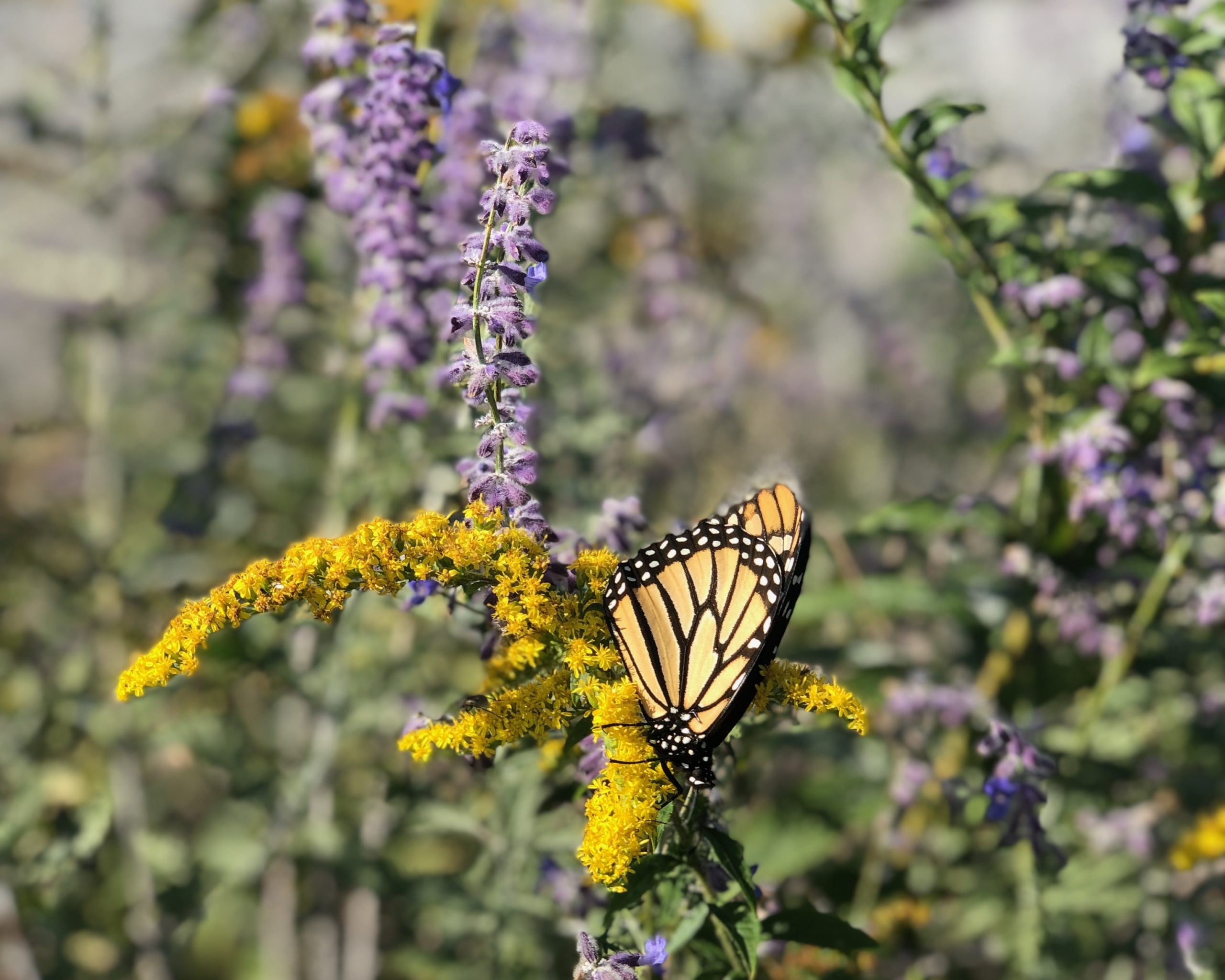
Rewilding is a conservation method that lets nature take its course by reestablishing natural ecosystems and native species. The term was popularized by conservation biologists Michael Soulé and Reed Noss in their paper, Rewilding and Biodiversity, in which they prioritize a “three Cs” method as a solution for biodiversity loss:
- cores, or pockets of uncultivated land, to expand habitats;
- corridors to connect open spaces, allowing movement and migration; and
- carnivores, to play a top-down role in managing and regulating ecosystems.
For a detailed and broader look at rewilding and how you can add elements of this method into your own gardening practices, see Green That Life’s post on How to Create a Wildlife-Friendly Yard. For further reading on natural landscaping techniques, see Green That Life’s book selections on green and healthy gardening.
The Five (or Six) Rs
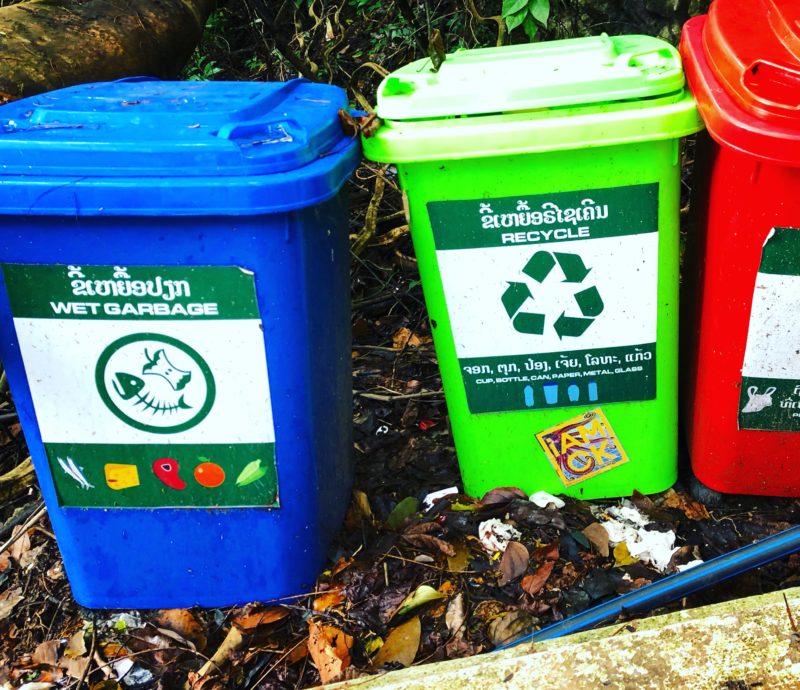
In descending order of importance:
- Refuse, when you can, single-use disposables and unnecessary packaging.
- Reduce your reliance on items – mainly single-use disposable ones – that generate trash, litter, and can pollute our environment.
- Rot applies to composting, or food scrap recycling. This is an excellent way to divert food waste from the landfill and recycle it into nutrient-rich compost. For further reading, I cover the what and how of composting in my food waste post.
- Reuse those long-lasting items made from durable products (cloth, wood, metal, glass), such as reusable straws, bags, containers.
- Recycle what you’re unable to refuse, reduce, or reuse.
My personal addition is Rethink, as in rethinking how we live our lives and the lifestyle choices we make. The goal should be to minimize waste and what we have as much as possible. Simple changes that we make to our everyday lives can have a big impact.
This infographic from the Environmental Protection Agency gives you an excellent visual of how much waste we generate. It also includes some tips on how to rethink our behavior to reduce that waste.
Single-Stream Recycling
Single-stream (or commingled or single-sort) recycling is a type of recycling in which all collected recyclable materials (such as plastics, paper, metal, and glass) are mixed together and then transported to a Materials Recovery Facility for processing. The advantages of single-stream (vs dual-stream) recycling include the convenience of not needing to sort recyclables, and reduced organizational and collection costs. The ease of single-stream was designed to encourage people to recycle more.
The disadvantages to single-stream, however, likely outweigh its advantages:
First, recyclables must ultimately be sorted and separated at some point; single-stream merely shifts the separation process from consumer to processing facility. Specialized processing plants designed to accommodate single-stream must be constructed, increasing capital expenditures and the requisite level of expertise and specialization needed by workers.
Second, single-stream increases cross-contamination and jeopardizes the quality and purity of recyclables, and ultimately its marketability. Recyclables are a commodity and demand is determined by the quality of the end-product.
The single-stream process has contributed to increased contamination rates, culminating in a decline in the market for recyclable materials and the imposition by China — once the main importer of recyclables — to institute its National Sword policy that sets low contamination standards on 24 types of imported waste material.
Single-Use
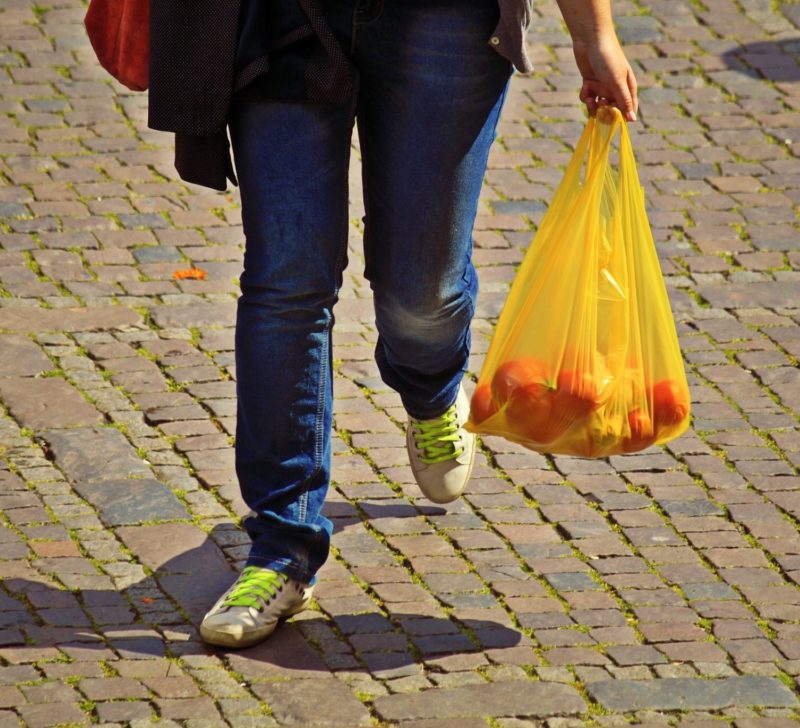
See also Disposable
Describes an item that is designed and made to be used only once. Although single-use items are typically made of plastic, there is a wide variety of products made from different materials.
Examples of single-use products include plastic and paper bags, plastic straws, plastic cutlery, plastic water bottles, plastic, and paper cups, produce bags, plastic coffee pods.
Slow Fashion
Slow fashion is a movement that advocates for a more mindful and sustainable approach to fashion with the goal of reducing the environmental and social impacts of the fashion industry and promoting a more sustainable and equitable fashion system. It emphasizes quality over quantity and encourages the production of long-lasting, ethically-made clothing.
Slow fashion prioritizes sustainability and environmental responsibility throughout the lifecycle of a garment and encourages consumers to make considered purchasing decisions, including the support of small and local fashion brands.
Popular slow fashion brands include Eileen Fisher, Cotopaxi, and Patagonia.
Contrast with Fast Fashion.
Smoky Coal
Smoky coal is a type of coal that produces a lot of smoke when burned, due to its high sulfur content and low heat value. It is often considered to be of lower quality than other types of coal, and its use is often restricted or banned due to its negative environmental impacts, including air pollution and greenhouse gas emissions. Smoky coal is typically used for domestic heating and small-scale industrial applications and is often replaced with cleaner, more efficient forms of energy in larger-scale applications.
Soil Amendment
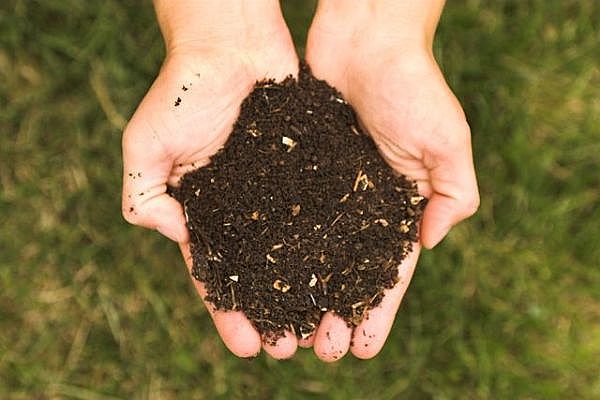
A soil amendment is any substance added to the soil to improve and enhance the soil’s properties, such as water and nutrient retention, drainage, absorption, and structure.
Soil amendments can be naturally derived (organic) or artificially manufactured (inorganic). Inorganic soil amendments can include vermiculite, perlite, and pea gravel; even tire particles.
Examples of soil amendments that act as natural fertilizers:
- Compost.
- Wood chips
- Grass clippings or straw
- Peat moss.
- Manure: poultry, horse.
- Meal supplements: Bone, blood, feather, corn gluten, cotton seed.
- Fish and seaweed.
Sustainability

Sustainability is a goal or the ability to plan for a future in which environmental, societal and economic considerations are in balance.
From an individual lifestyle perspective, sustainability means living within one’s means. It’s the act of meeting the needs of the present without compromising the ability of future generations to meet their own needs.
The benefits of living a more sustainable lifestyle include:
- health benefits, by using more natural products, free of harmful chemicals and toxins.
- environmental benefits, by creating less waste, using fewer natural resources and reducing pollution.
- cost savings, by using fewer resources, and/or using them more efficiently.
See also: Sustainable Development.
Sustainable Development
The United Nations Brundtland Commission defines sustainable development as “meeting the needs of the present without compromising the ability of future generations to meet their own needs.”
There are four intertwined dimensions to sustainable development:
- society
- environment
- culture
- economy
The United Nations distinguishes between sustainability and sustainable development in this way: “Sustainability is often thought of as a long-term goal (i.e. a more sustainable world), while sustainable development refers to the many processes and pathways to achieve it.”
Sustainable Development Goals (SDGs)
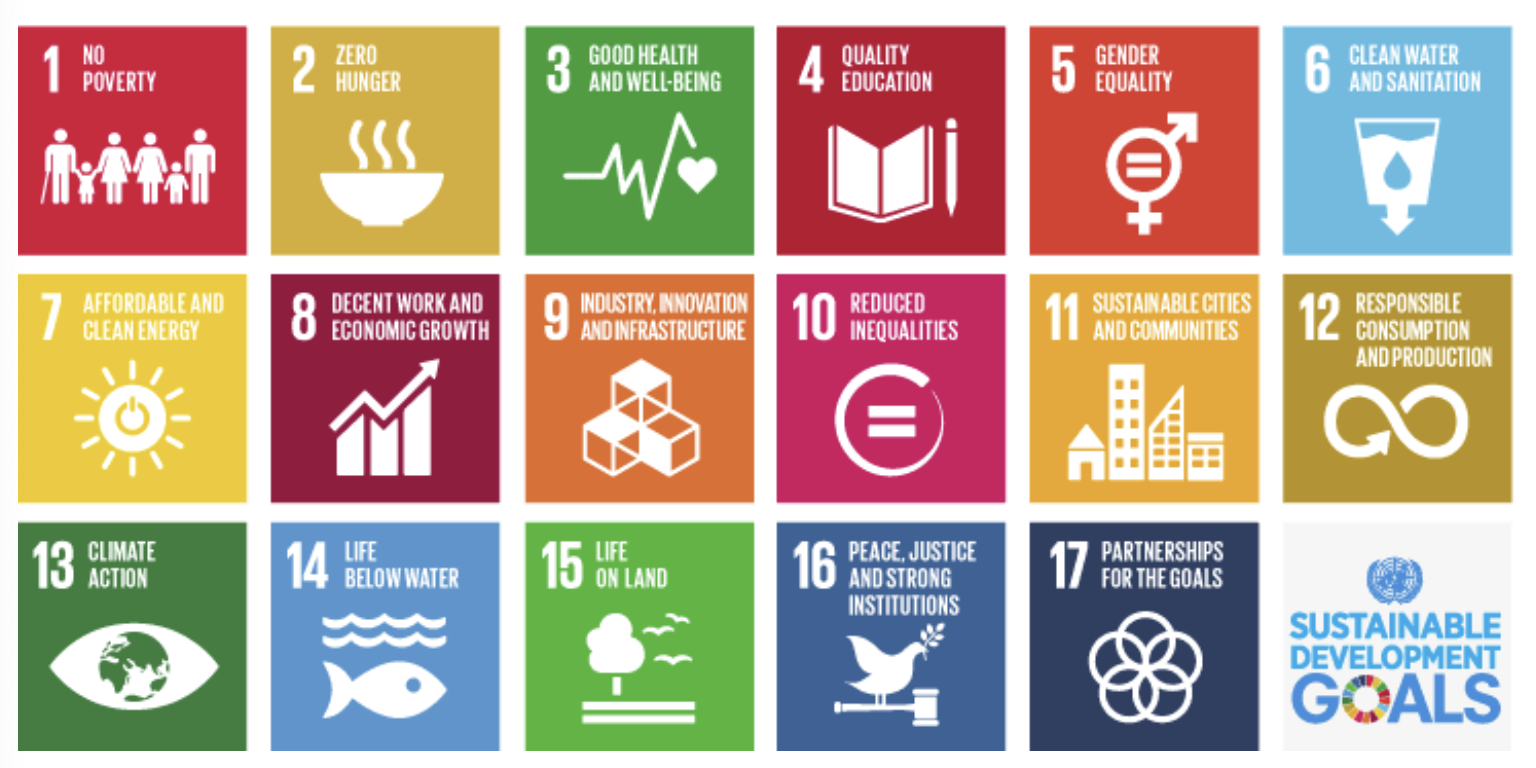
The United Nations Sustainable Development Goals (SDGs) are a set of 17 global goals and 169 targets adopted by the UN General Assembly in 2015 as “a universal call to action to end poverty, protect the planet, and ensure that by 2030 all people enjoy peace and prosperity.”
The goals cover a wide range of social, environmental and economic development issues, which can be viewed in greater detail on the UN SDG site.
Thermal Energy Network
A thermal energy network, also known as a district heating or cooling system, is a system that transports heat or cold from a central source to multiple buildings or homes in a defined area. The heat or cold is typically generated by a large-scale heating or cooling plant and is distributed through a network of underground pipes.
Thermal energy networks can be used to provide space heating, hot water, and air conditioning to buildings, and can be powered by a variety of energy sources, including electricity and renewable energy sources such as geothermal, solar thermal, or sewer heat. Thermal energy networks can be more energy efficient and cost-effective than individual heating or cooling systems since they allow for the sharing of energy resources and can reduce the overall demand for energy.
For more information on Thermal Energy Networks, including examples, see the New York State Energy Research and Development Authority’s webinar on the topic.
Thermoforming
Thermoforming is a manufacturing process in which a plastic sheet is heated and formed into a specific shape using a mold. The plastic is heated until it is soft and pliable, and then it is placed over the mold. Air or gas is used to press the plastic against the mold to create the final shape. The formed part is then cooled and removed from the mold, and any excess plastic is trimmed away.
While thermoforming can be applied to a number of different plastics, it is most often used to produce polyethylene terephthalate (PET), or #1 plastic products, such as disposable food containers and drinking cups.
Tipping Point
From a climate change perspective, a tipping point refers to a threshold beyond which a change in the Earth’s climate system becomes irreversible.
Tipping points can occur in various parts of the climate system, such as the melting of polar ice caps or the release of greenhouse gases from thawing permafrost. Once a tipping point is reached, it can lead to a cascade of events that can have serious consequences for the Earth’s climate and ecosystems. For example, the loss of Arctic sea ice could cause the planet to warm more rapidly, leading to more extreme weather events and further damage to the environment.
United Nations Global Biodiversity Framework
The UN Global Biodiversity Framework was adopted in December 2022 at the UN Biodiversity Conference (COP 15), held in Montreal, Canada. Governments from around the world agreed on a new set of goals to protect biodiversity, guiding global action through 2030 to halt and reverse nature loss. The Framework addresses the key drivers of nature loss that are needed to secure human and planetary well-being and health.
What took place at COP 15:
- Adoption of an equitable and comprehensive framework matched by the resources needed for implementation
- Clear targets to address overexploitation, pollution, fragmentation and unsustainable agricultural practices
- A plan that safeguards the rights of indigenous peoples and recognizes their contributions as stewards of nature
- Finance for biodiversity and alignment of financial flows with nature to drive finances toward sustainable investments and away from environmentally harmful ones
Up-cycle
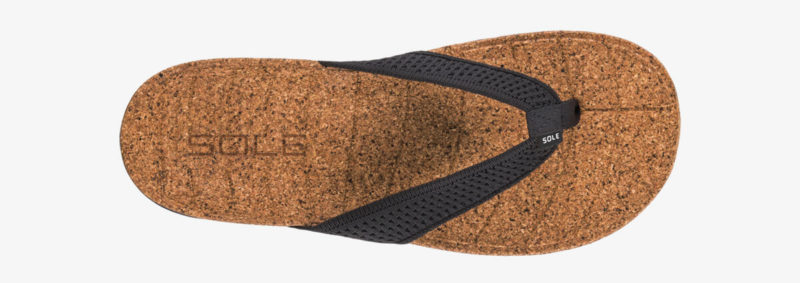
The opposite of “downcycle.” This is a form of recycling where used materials and products are transformed into higher-quality products.
Examples of up-cycled products include homemade items (for example, clothing to dish rags) or purchased products (for example, footwear and yoga mats made out of cork).
Virgin Materials
Virgin materials refer to raw materials that have not been previously used or processed. They are typically extracted from natural sources and are in their natural or unaltered state. Virgin materials are used as inputs in the production of new products (vs recycled or post-consumer materials).
The use of virgin materials, such as virgin plastic, can have potential environmental impacts due to resource extraction and processing, prompting efforts to use, when appropriate, recycled materials to minimize these impacts.
Virgin Plastic
Virgin plastic is newly manufactured plastic pellets that have not been recycled. It is produced directly from petrochemical — fossil fuel-derived — feedstocks.
Due to the purity of their composition, virgin plastic pellets have wider use in manufacturing processes than recycled plastics. Once used, the degradation of recycled plastics renders the properties of these materials less stable and safe, and recycled plastics are ultimately downcycled and disposed of.
Virtual Power Plant (VPP)
Volatile Organic Compounds (VOCs)
Volatile organic compounds (VOCs) are organic chemical compounds that have a high vapor pressure and low water solubility. This means they easily evaporate at room temperature and can be present in the air as gases.
VOCs are found in thousands of household and industrial products, including paint, pesticides, cosmetics, furniture, cleaning agents, and fuels, and can have negative effects on human health and the environment. They are also a significant contributor to air pollution.
Waste Incinerator
Waste incinerators are facilities that dispose of municipal solid waste through combustion heat. Acting like an enormous furnace, waste is burned at extremely high temperatures and reduced to ash. Some incinerators are waste-to-energy plants, using the waste as a fuel source to make steam and electricity.
While incineration plants can provide an effective method of reducing waste, critics have pointed to potential air pollution from released toxins — dioxin, lead, and mercury — and greenhouse gas emissions that can result from the combustion process. There can be additional repercussions, including
- challenges related to the proper disposal of potentially hazardous ash;
- economic incentives to feed incinerators that are at cross purposes with waste reduction goals;
- environmental justice issues related to the disproportionate siting of facilities in disadvantaged and low-income communities.
Wetlands
Wetlands are areas of land that are inundated with water, either permanently or seasonally. This water can come from various sources, such as rivers, lakes, groundwater, and even the ocean. Wetlands are important ecosystems that support a wide variety of plants and animals, and play a critical role in regulating water flow and protecting against flooding.
Wetlands are characterized by their hydrology. These areas are often home to unique plant species that are adapted to wet conditions, such as cattails, sedges, and rushes–providing habitat and food for many different animals, including fish, amphibians, reptiles, birds, and mammals.
Wetlands also provide many important ecological services. They help filter pollutants and sediments from water and can act as a sponge to store excess water during times of heavy rain. This feature helps prevent flooding and erosion and can improve water quality downstream.
Wish-Cycling or Wishcycling

Wish-cycling is the act of putting a non-recyclable item in the recycling bin with the hope it will be recycled. A wish-cycling example is placing a takeout coffee cup in the recycling bin, when it is not recyclable.
In addition to wish-cycling an item that’s not recyclable, it’s possible to wish-cycle the process. That is, the material is recyclable, but, uncertain of the recycling rules, it’s disposed of improperly. An example of this is placing broken glass in the recycling bin. Glass is recyclable, but broken glass is not.
For more detail about wish-cycling and tips for how not to wish-cycle, see Green That Life’s post: Are You Wish-Cycling? 10 Simple Tips to Recycle Right
Zero Waste
This is a way of life that encourages rethinking product lifecycles so that all products are reused instead of tossed in the garbage.
In short, the goal of Zero Waste practices is to reduce consumer consumption to such a level that nothing gets wasted and sent to the landfill or incinerators.
